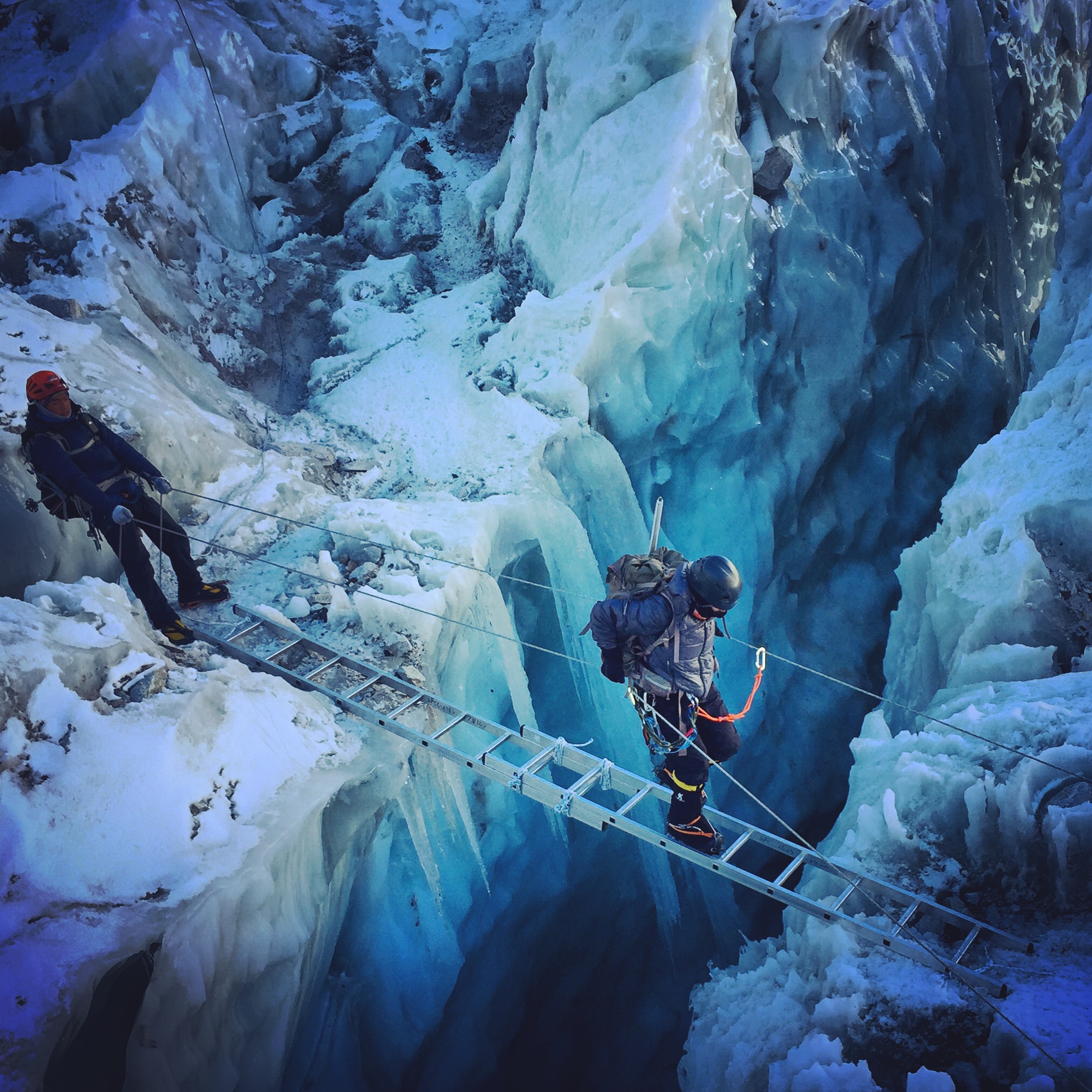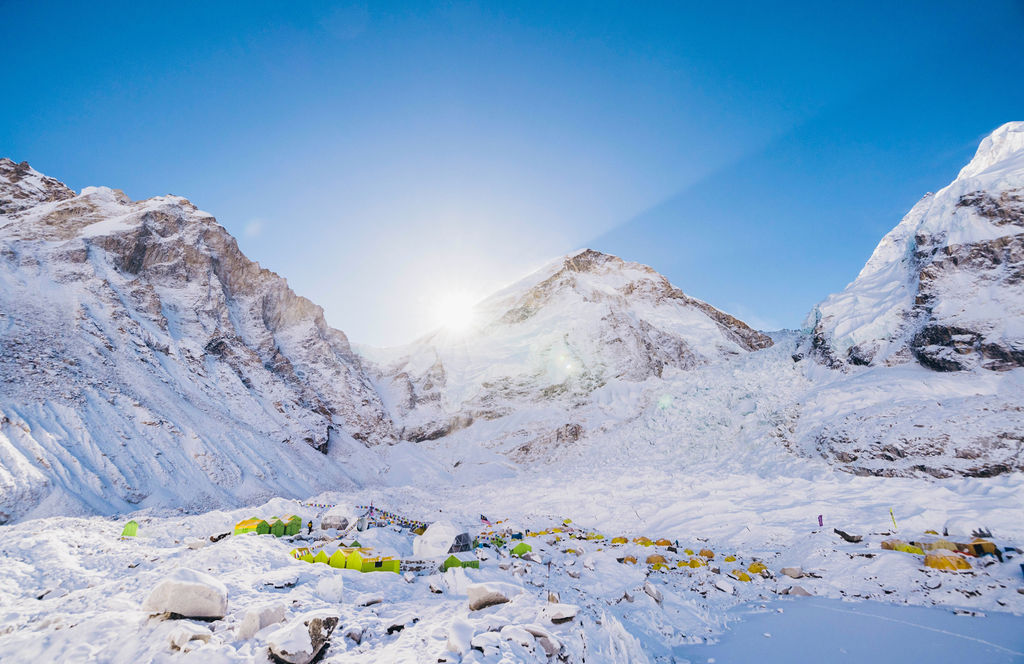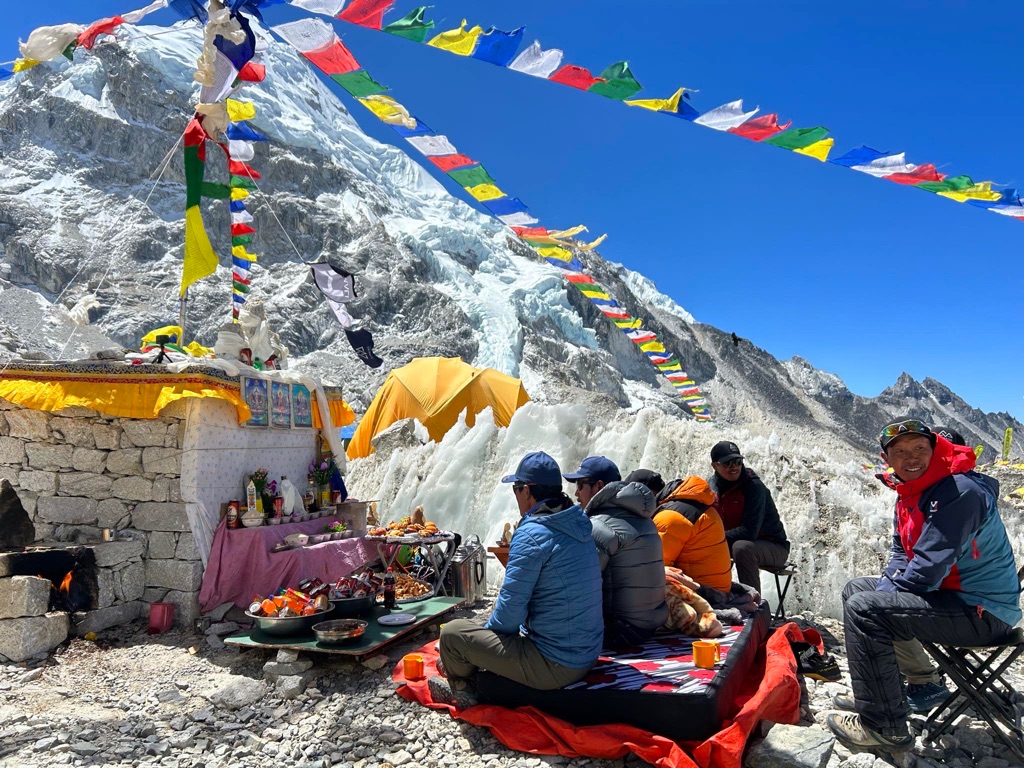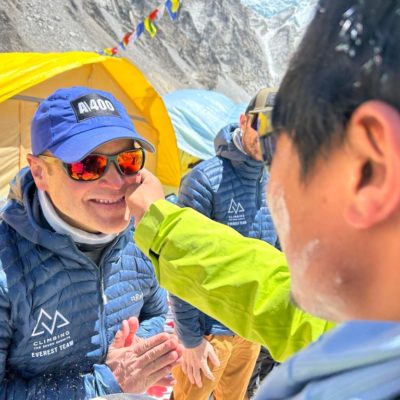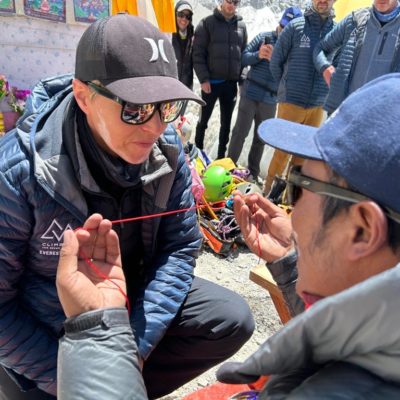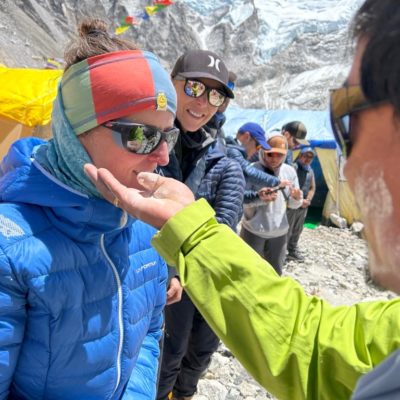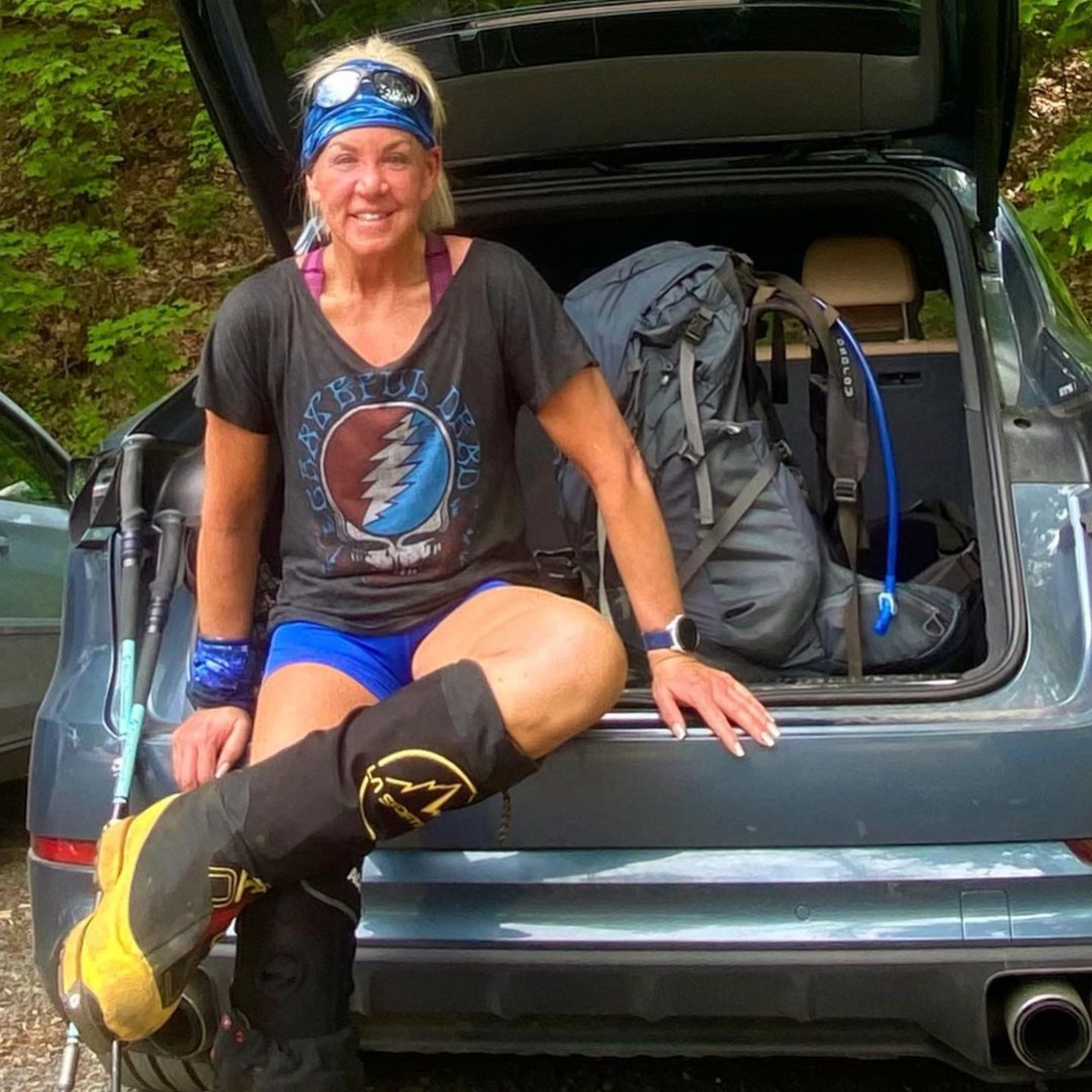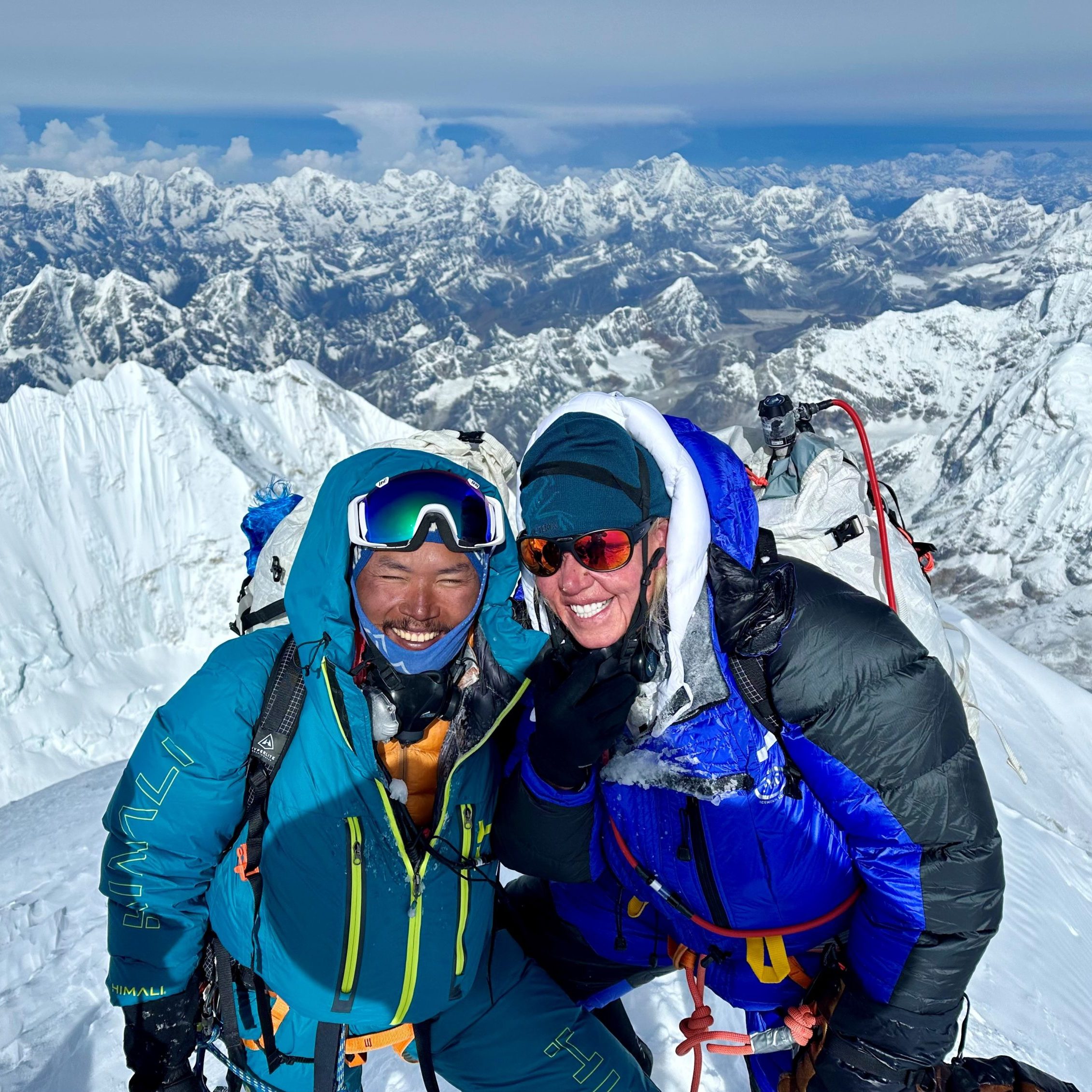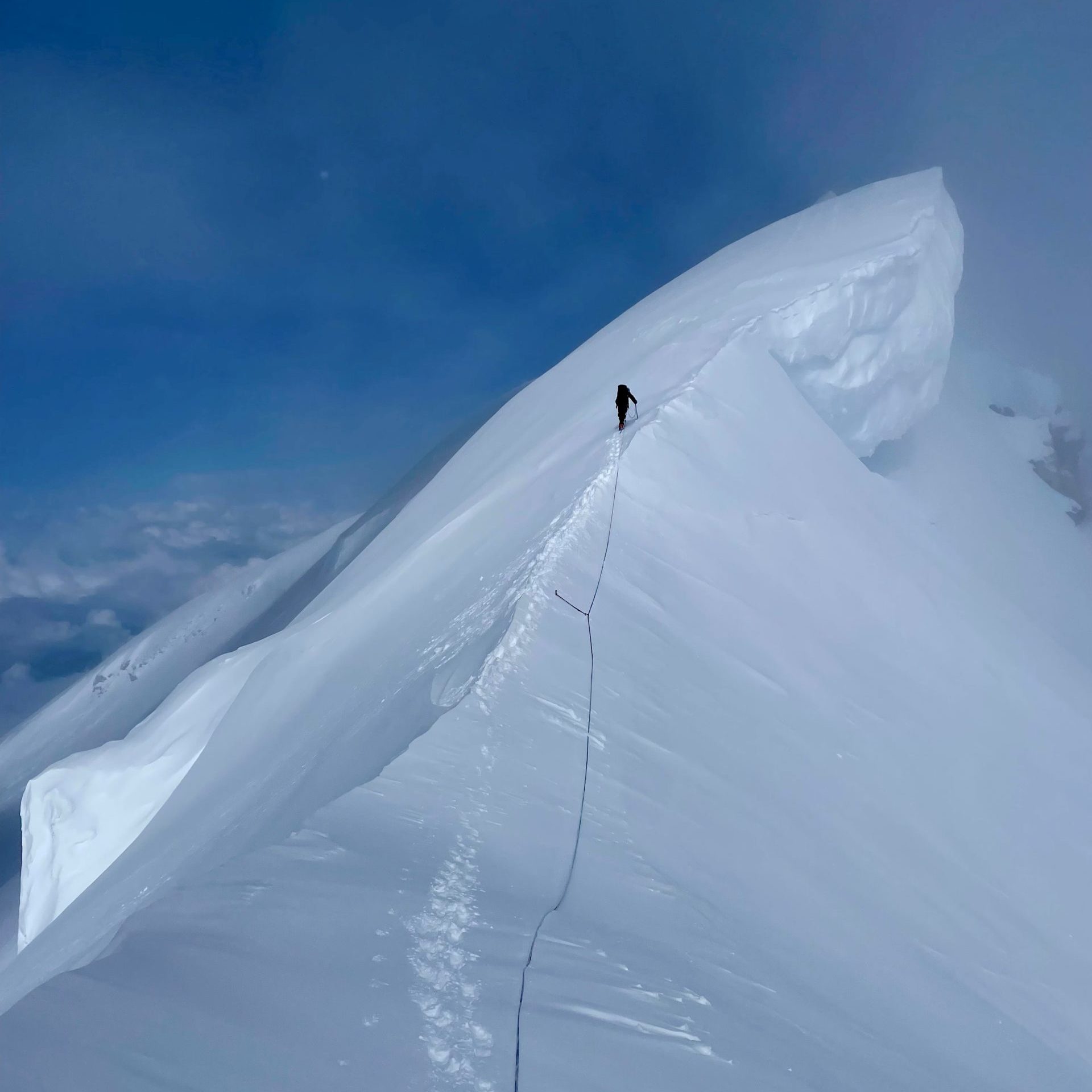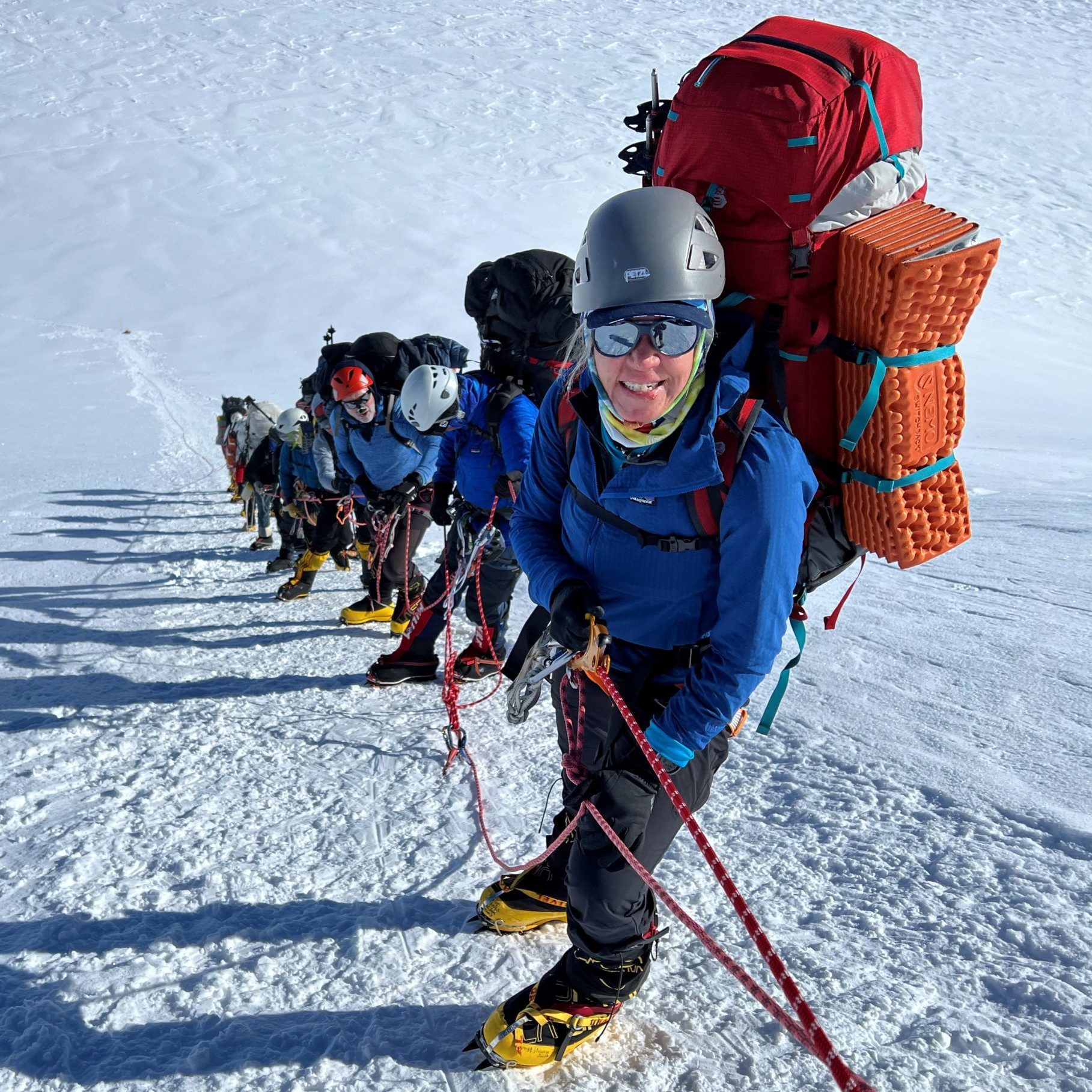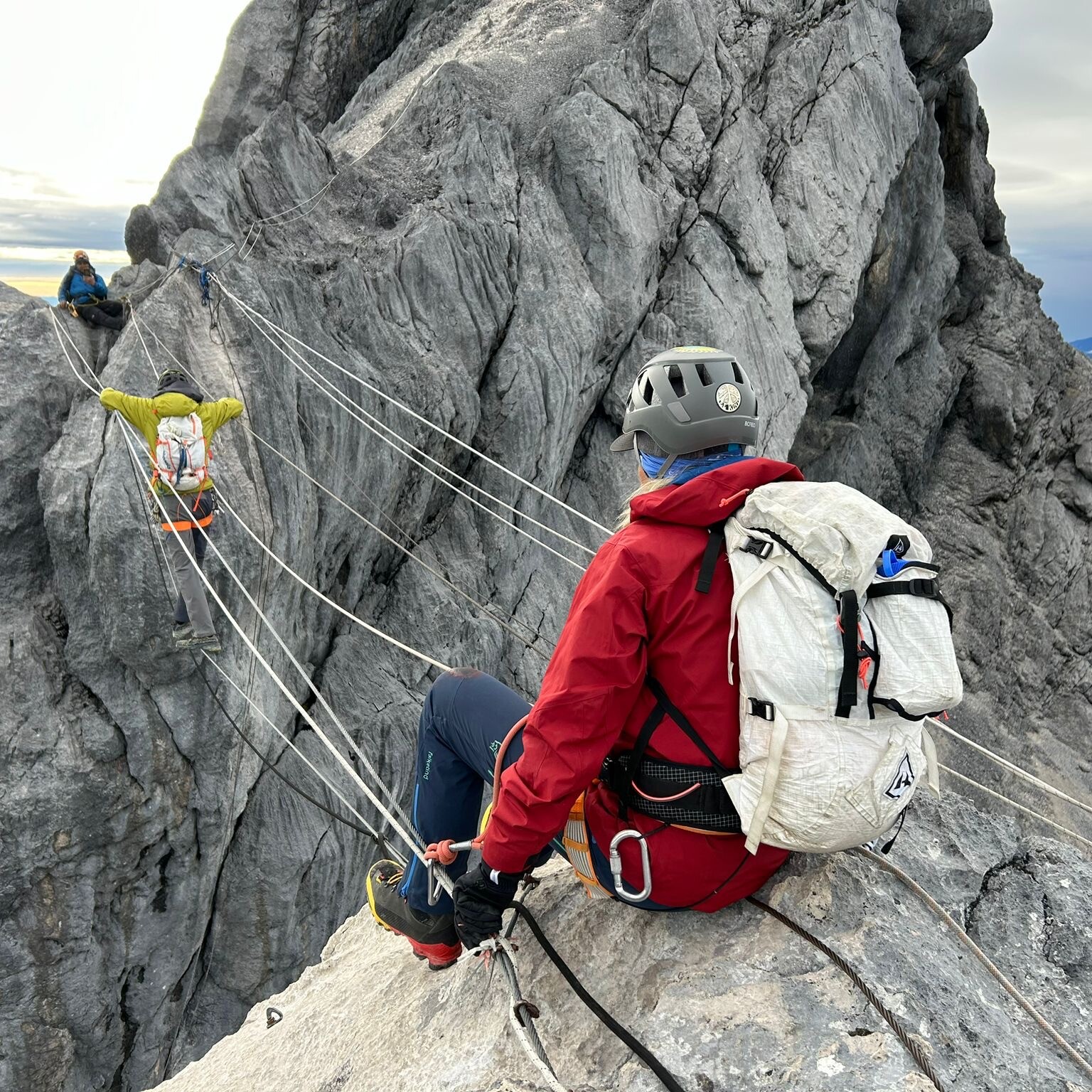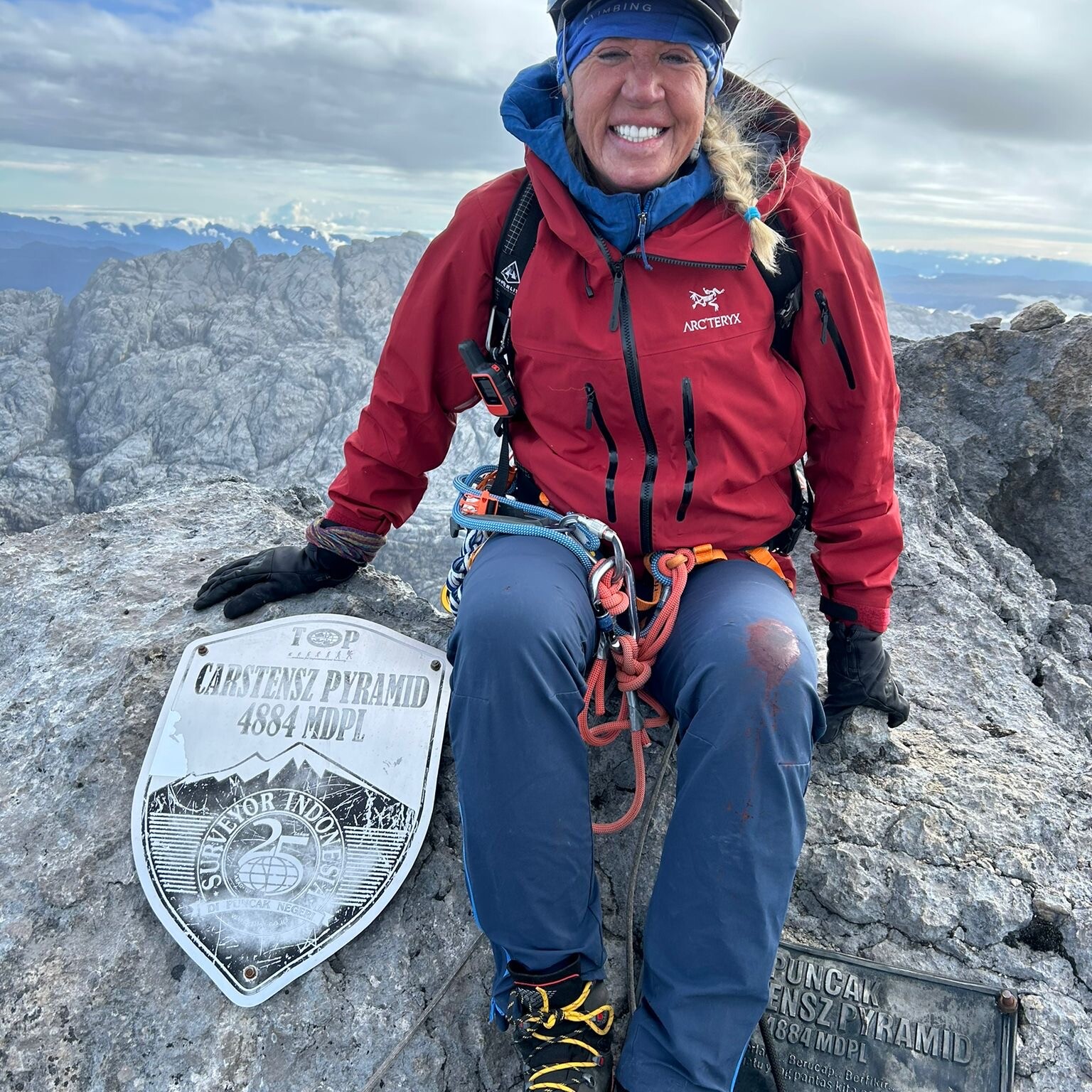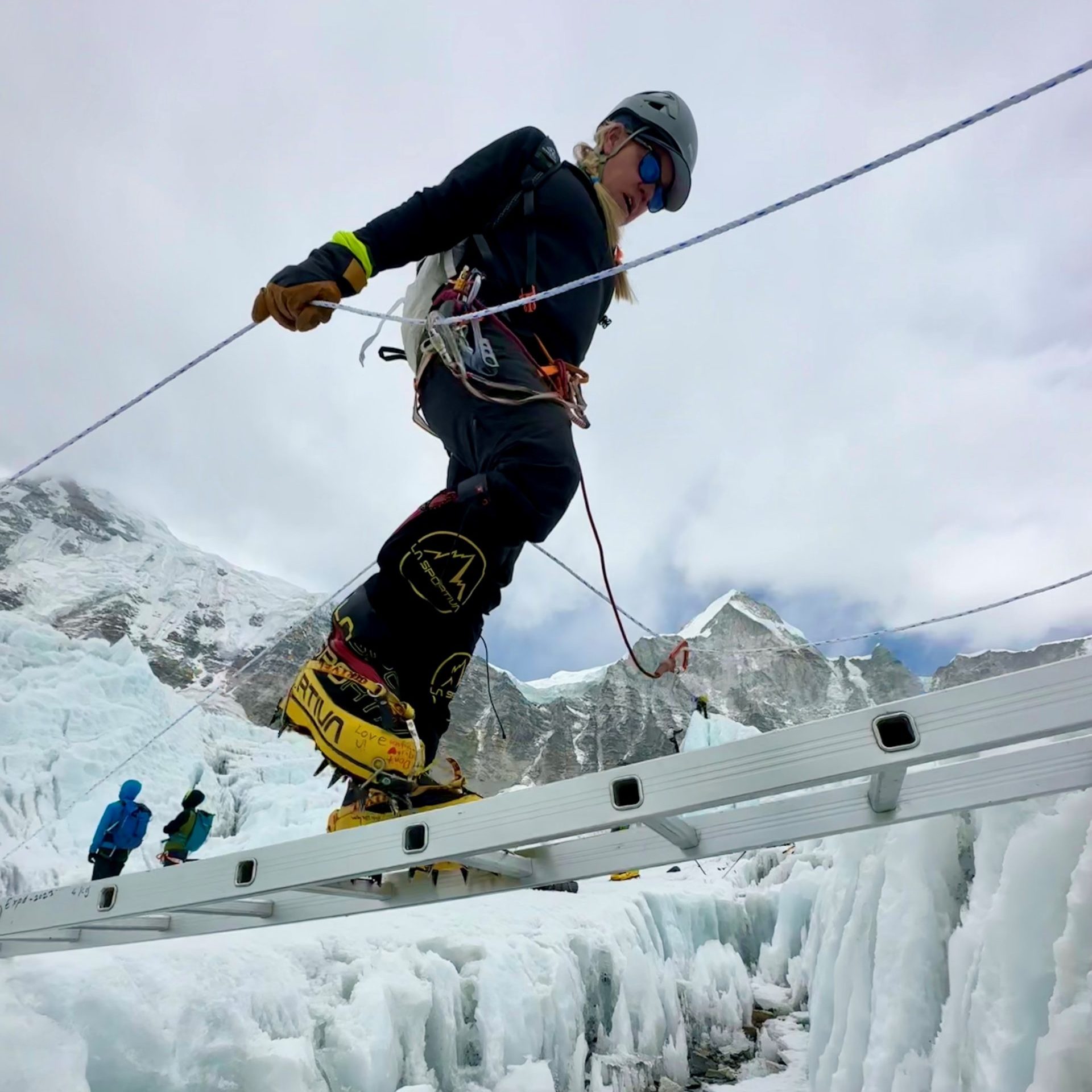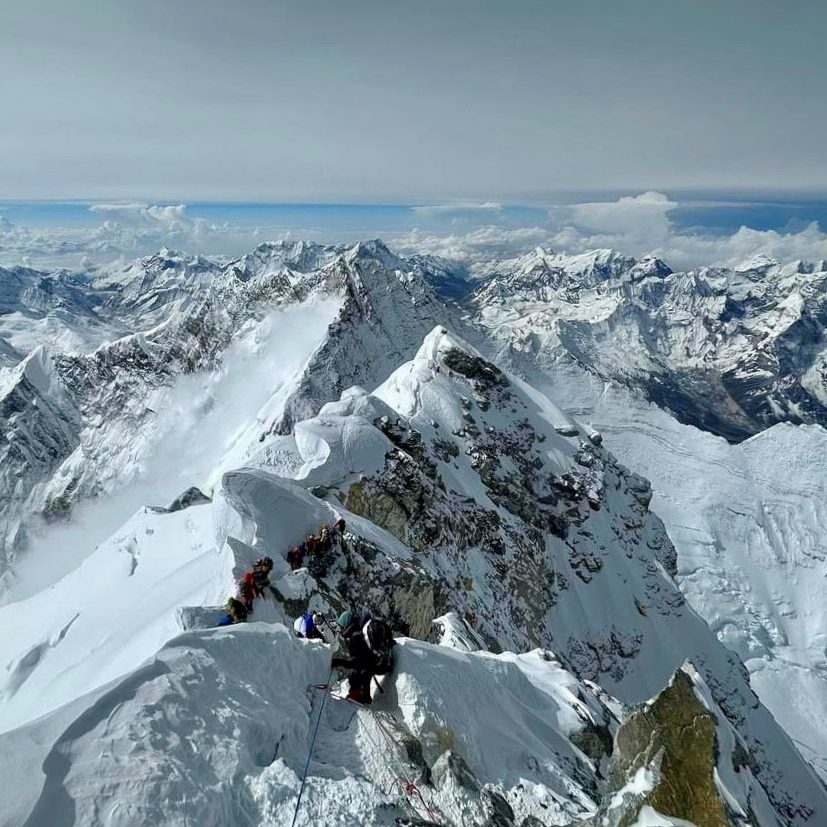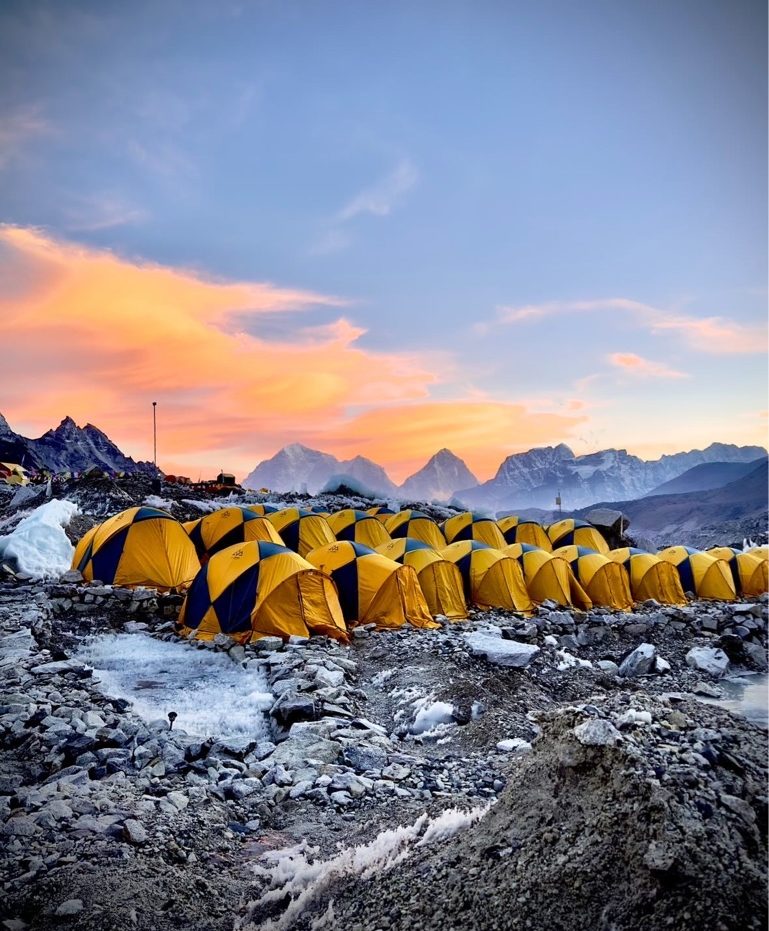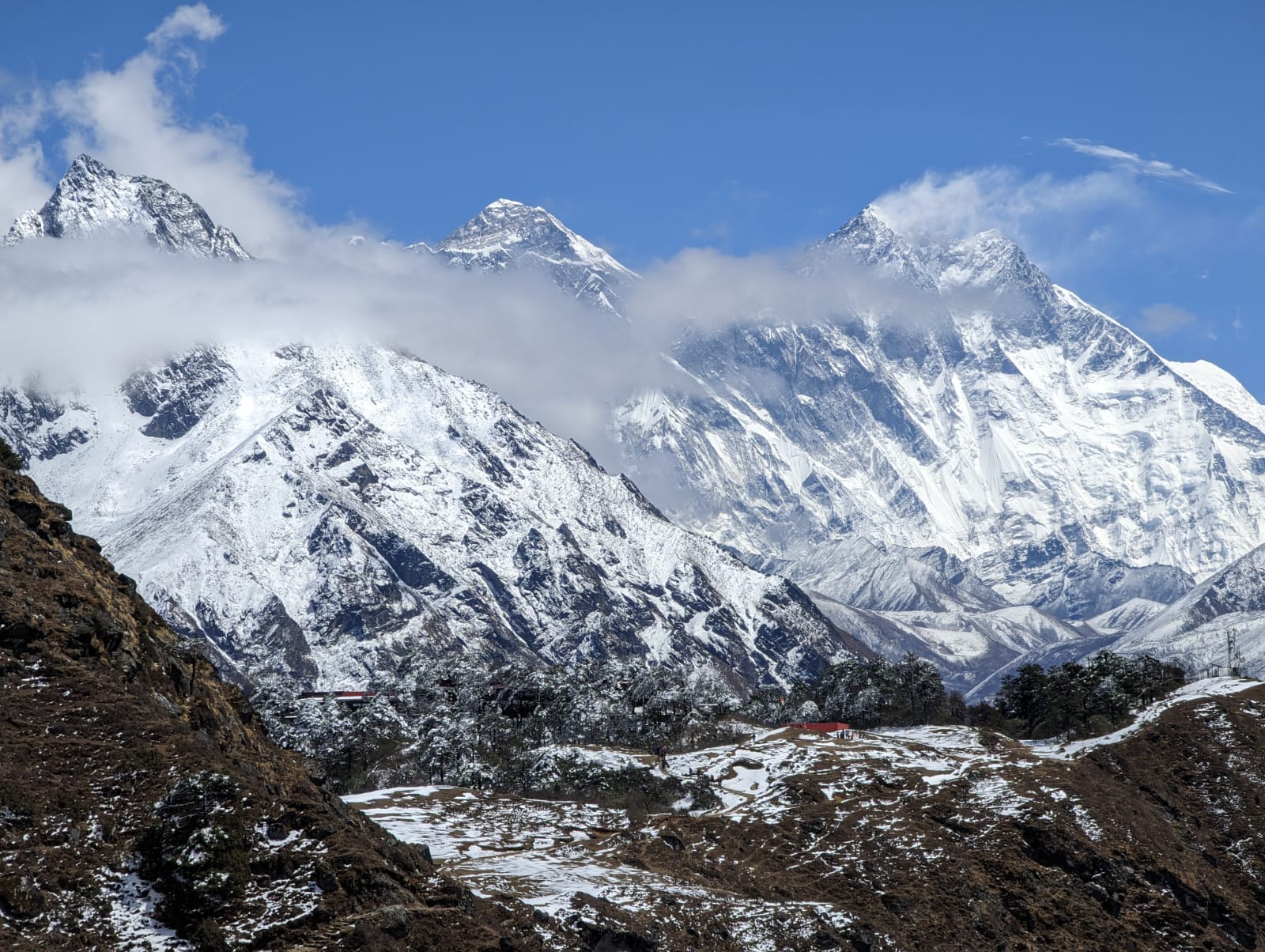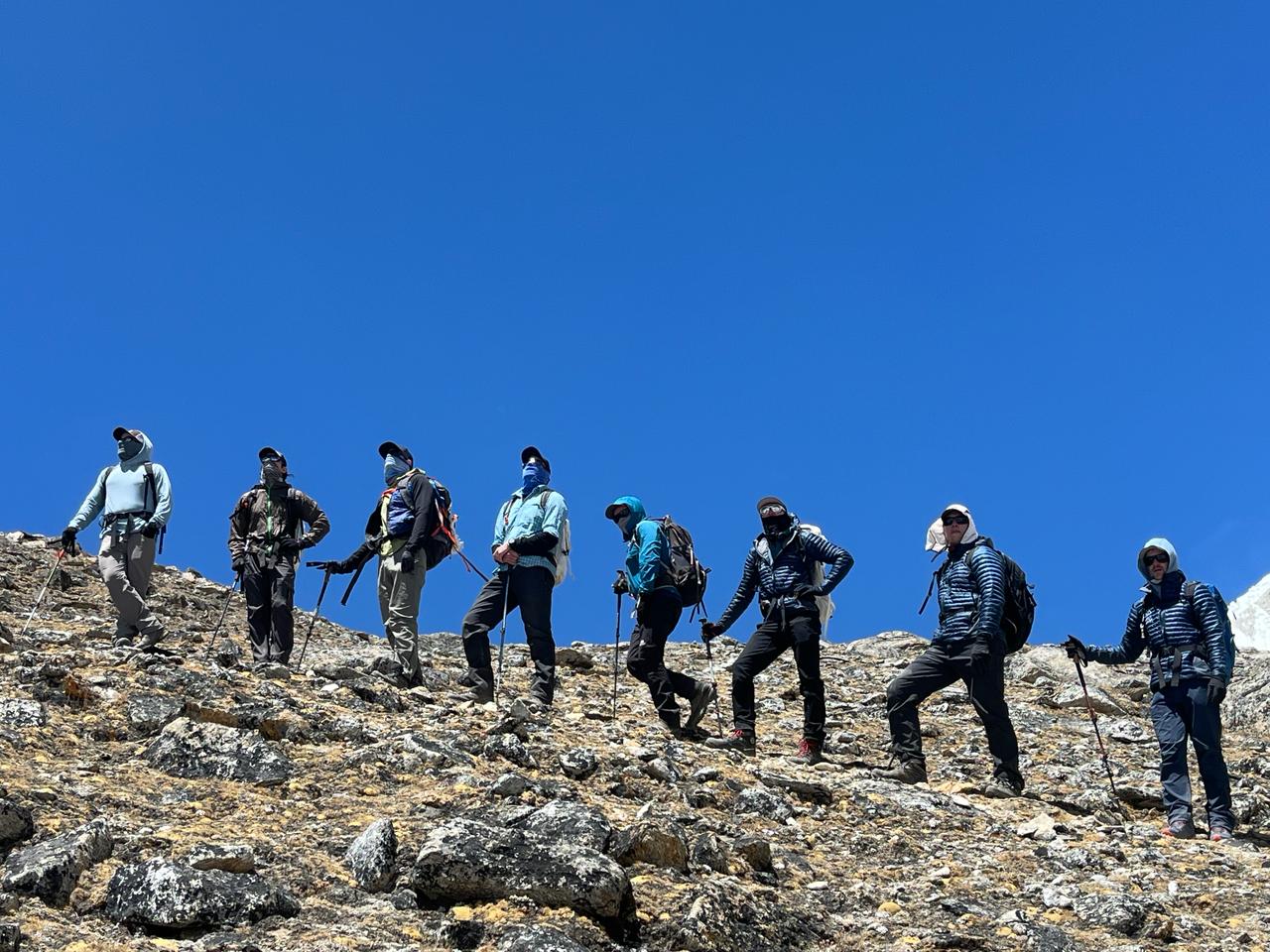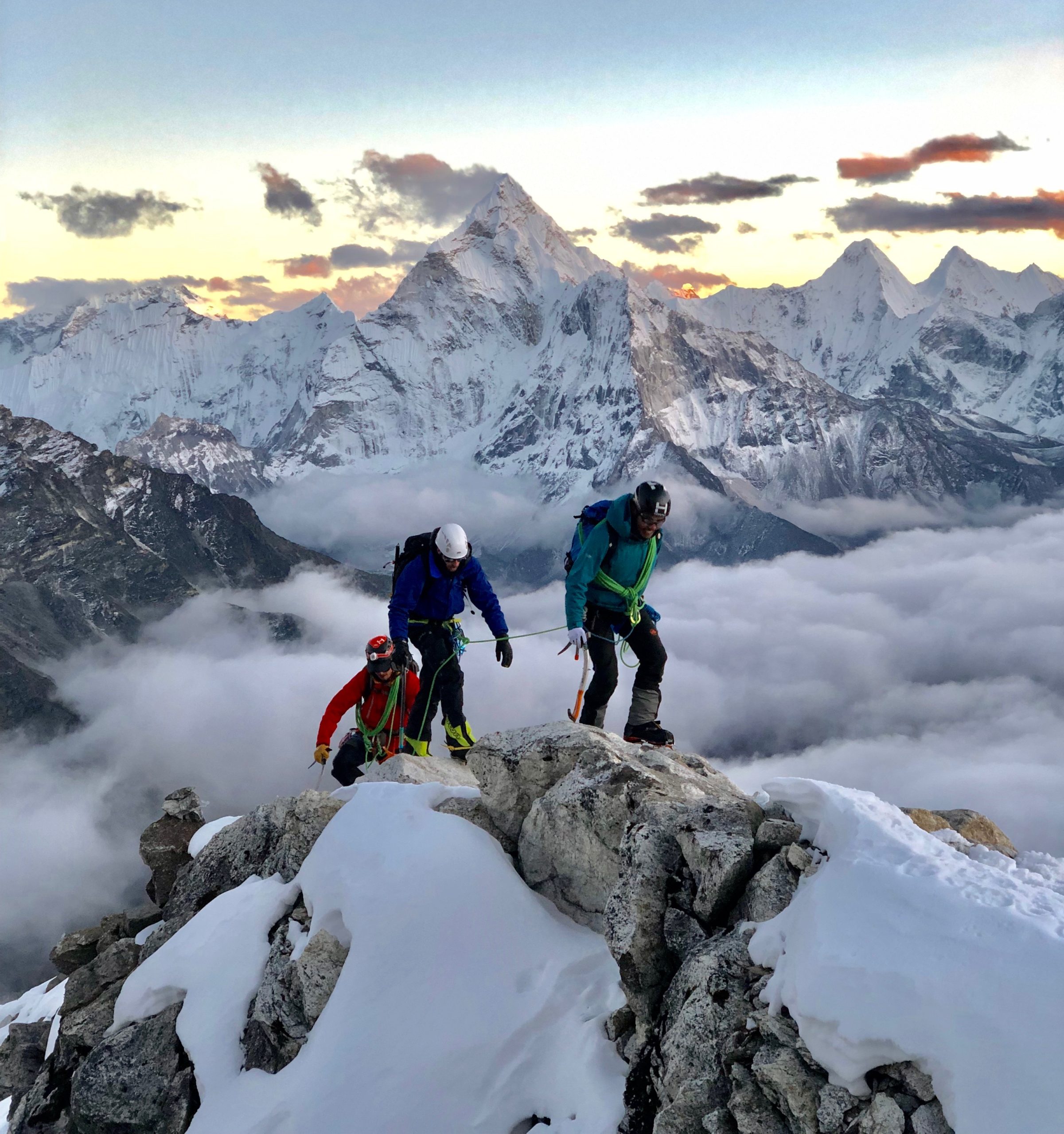Everest Rotations are on Schedule
29th April
We hope everyone had a great weekend, we sure did! Here is the latest news from CTSS in the Himalayas.
Our Camp 3 Climber Andrea and guide Robert J are doing well at Camp 2. They are anticipating climbing the Lhotse face to tag their goal of Camp 3 tomorrow! We are wishing them both luck.
Our 1:1 Climber Susan and her guide Peg descended today to EBC to rest and celebrate their successful first rotation on Everest.
Our 40 Day Speed Ascenders have moved up to Camp 1 to begin their long rotation. As we type our Western Guided Team will be preparing to depart Everest Base Camp on their second rotation and climb through the Khumbu Icefall in the dark, cold wee hours of the morning to reconvene and meet up with the speed ascenders. They will then remain on the same schedule together. Their ultimate goal for this rotation is to tag Camp 3 before descending.
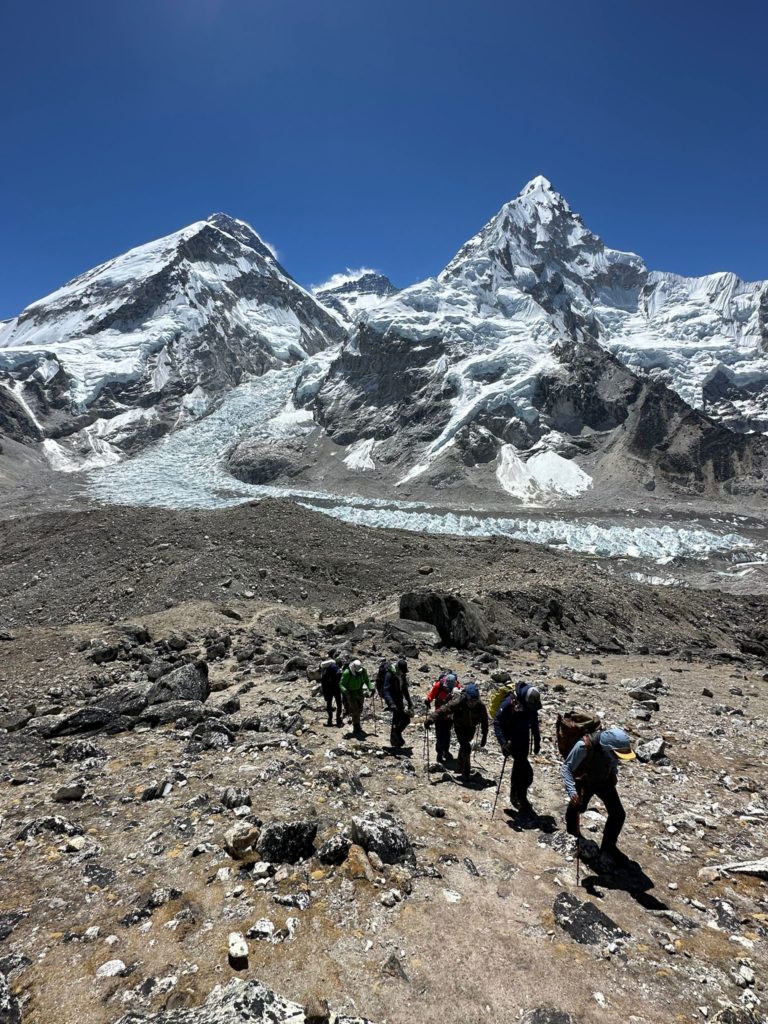
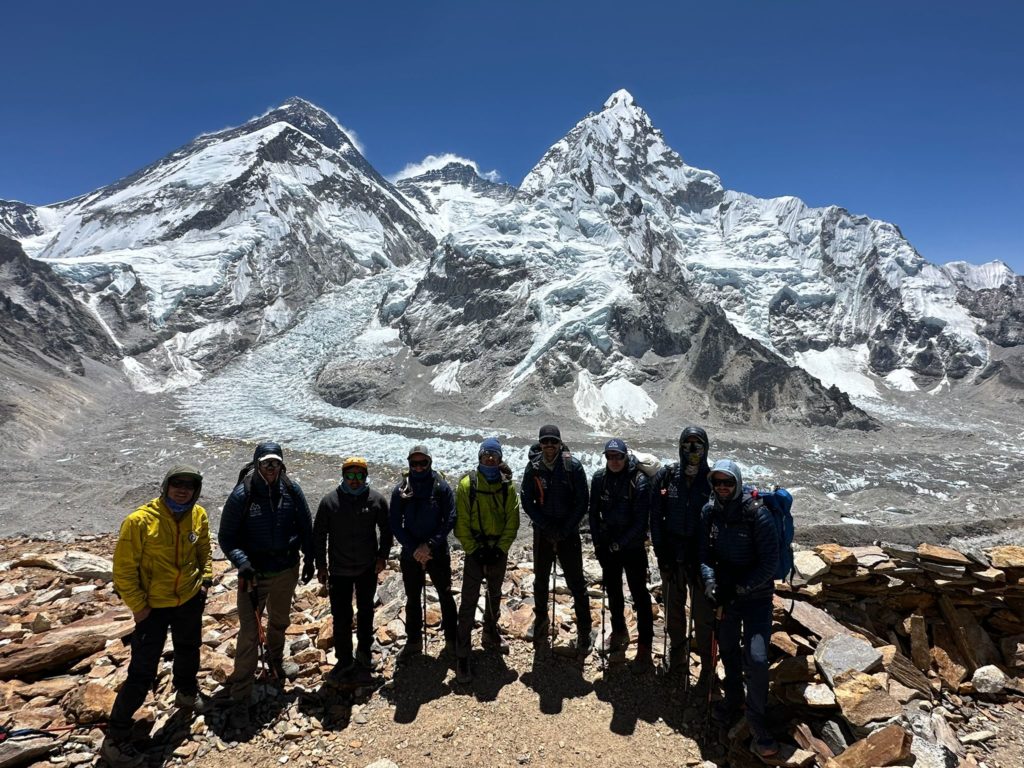
Our custom itinerary Everest and Lhotse climber Rohan and his private guide Sujan arrived at Everest Base Camp over the weekend, they will spend a few days acclimatizing and training in base camp before starting their first rotation.
Everyone else including our 1:1 Privately guided climbers and our personal sherpa climbers are continuing to rest, train, and acclimatize at EBC.
All is well! Everyone is happy, healthy, and moving well.

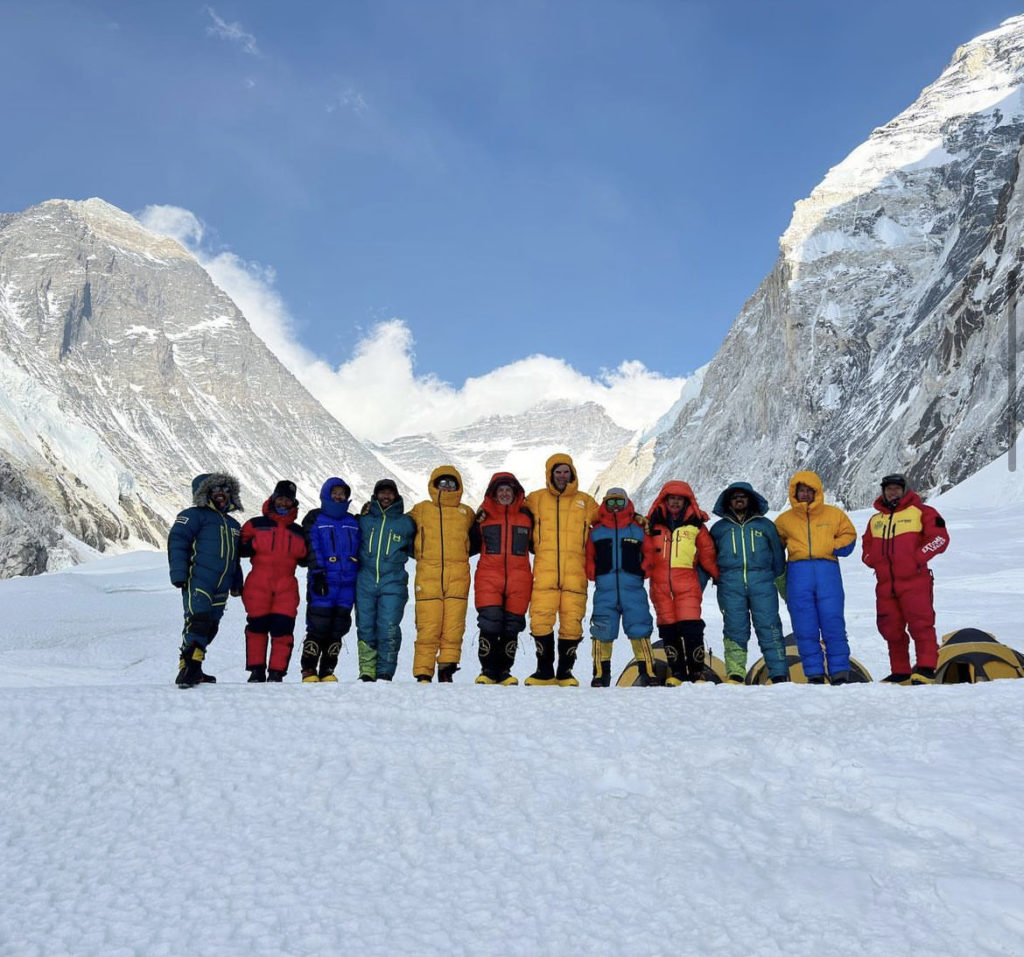
Webinars
Webinars
Join us for an upcoming live webinar, or tune into one of our past webinars!
Speed Ascents Demystified: What It Takes to Climb in Less Time
Thursday, January 29th at 10am PT / 1pm ET
Climbers today want to move faster, spend less time away from home, and still arrive on the mountain fully prepared. That’s exactly what Speed Ascent programs are designed to deliver. This session breaks down how pre‑acclimatization works, what the training looks like, and why this approach has become a trusted option for climbers tackling major peaks on tighter timelines.
You’ll hear from three leaders at the forefront of modern altitude strategy. CTSS founder Mike Hamill will outline how Speed Ascents fit into real expedition itineraries across Everest, Aconcagua, Kilimanjaro, the Ecuador Volcanoes, Manaslu, Lhotse, and Cho Oyu. Hypoxico CEO Brian Oestrike will walk through the chamber systems and home‑based protocols athletes use to arrive at altitude more prepared. And Senior Performance Specialist Nick Hart from The Altitude Centre will explain the physiological adaptations behind effective pre‑acclimatization, along with the performance data that guides best practice.
If you’ve ever wondered how climbers compress long itineraries safely, or whether a Speed Ascent could work for your goals, this session will give you a clear, grounded understanding of the process and what to expect.
Register to join us live and bring your questions.
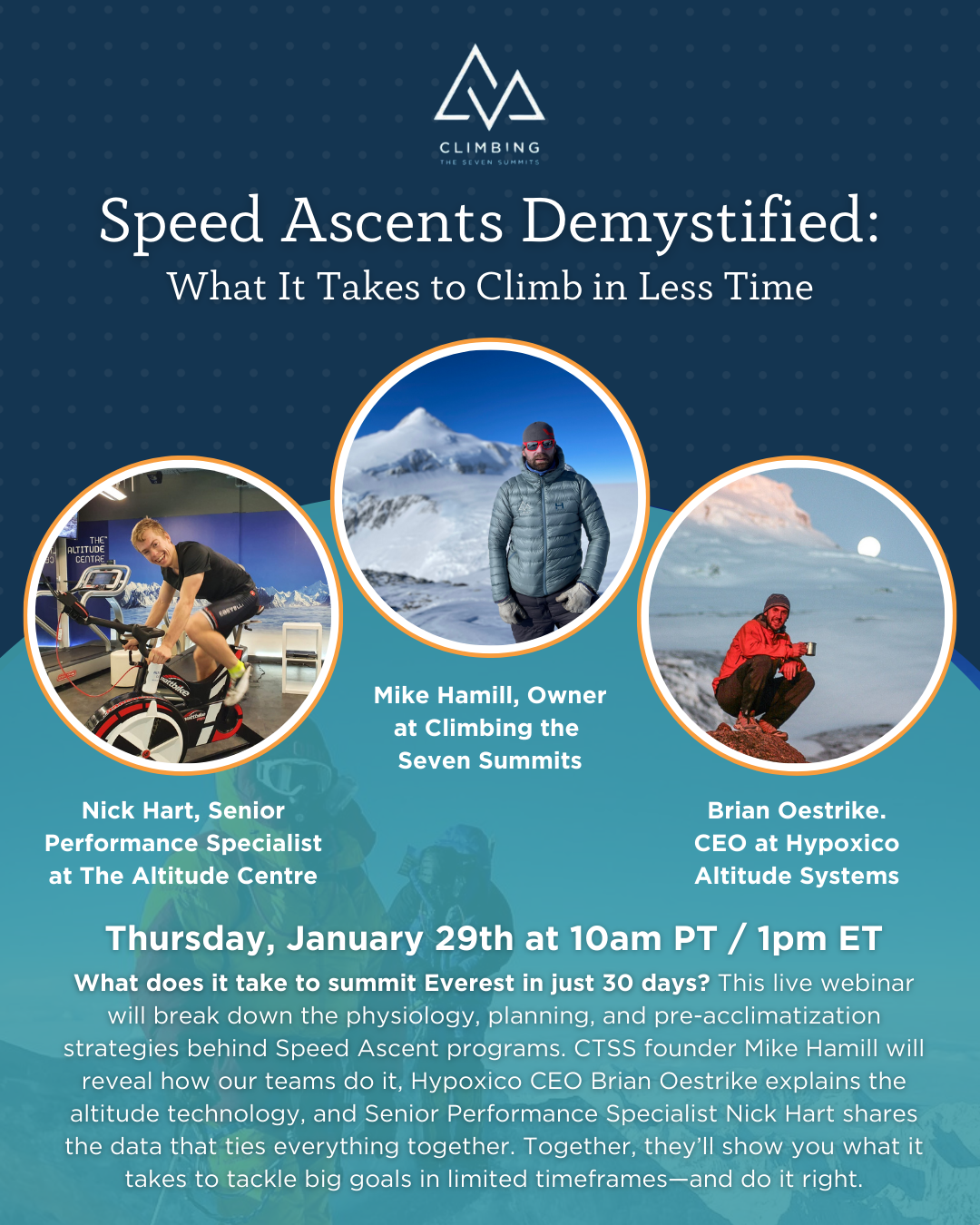
"I can't recommend these incredible webinars enough! Four years ago, when I was a couch potato, YouTube recommended an inspiring conversation between Mark Postle (Evoke Endurance) and Caroline Pemberton (CTSS). Years later, I got the good fortune of being coached and guided by both. And it's getting results far beyond what I would have humanly expected!"
- Anirudh Koul
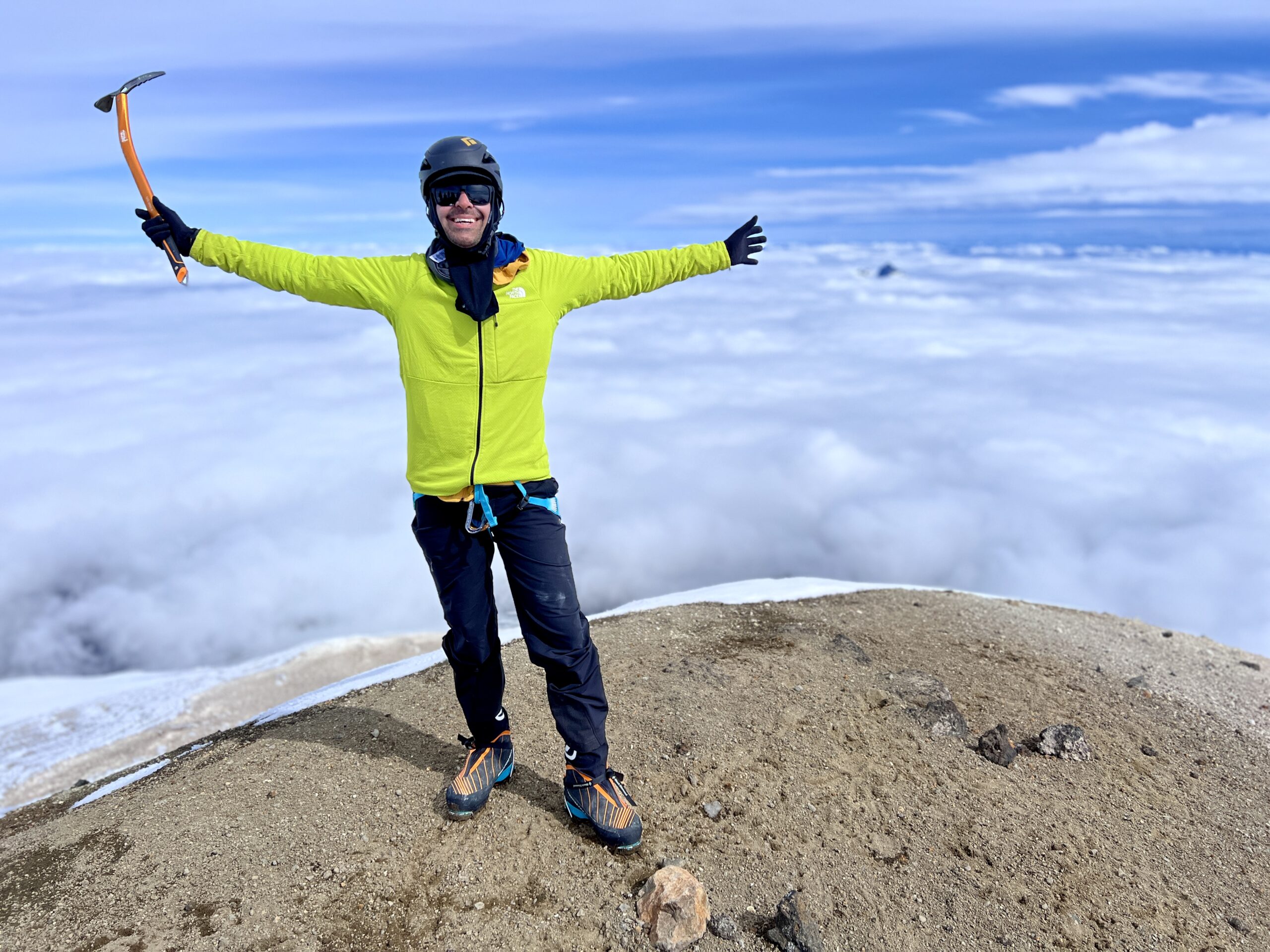
Past Webinars from Climbing the Seven Summits
The Everst Experience Webinar Series
Rotations and Training Continues on Everest
27th April
Good morning from the Khumbu! We hope you are moving into a great weekend.
A quick update from Everest Base Camp; yesterday our 1:1 Climber Susan and Guide Pega, Camp 3 Climber Andrea and guide Robert as well as our Personal Sherpa Climbers Aga, Darragh and Lee moved up to Camp 1. After their first night in the Western CWM they will tag Camp 2 today before retreating back to Camp 1 for a second night. Most will then drop back to Everest Base Camp. Andrea & Robert however will stay up for a long rotation all the way through to the goal of climbing to Camp 3.
Our Private 1:1 Climbers came down yesterday, and had a restful night in Everest Base Camp last night. They will take a few days recovery now to allow their bodies to play catch up and set a new point of acclimatization before their next rotation.
Our Western Guided Team and 40 Day Speed Ascenders have been training hard and keeping their skills current and will continue with that plan for the next few days before heading back uphill.
Jesse our 30 Day Speed Climber and guide Tomi are doing great, acclimatizing well and will do more training tomorrow outside Everest Base Camp before their long rotation.
Everyone has been wonderful company and great team players and are having fun together, as they move closer to their goals.
We hope you have a great weekend!
Cheers,
CTSS Team
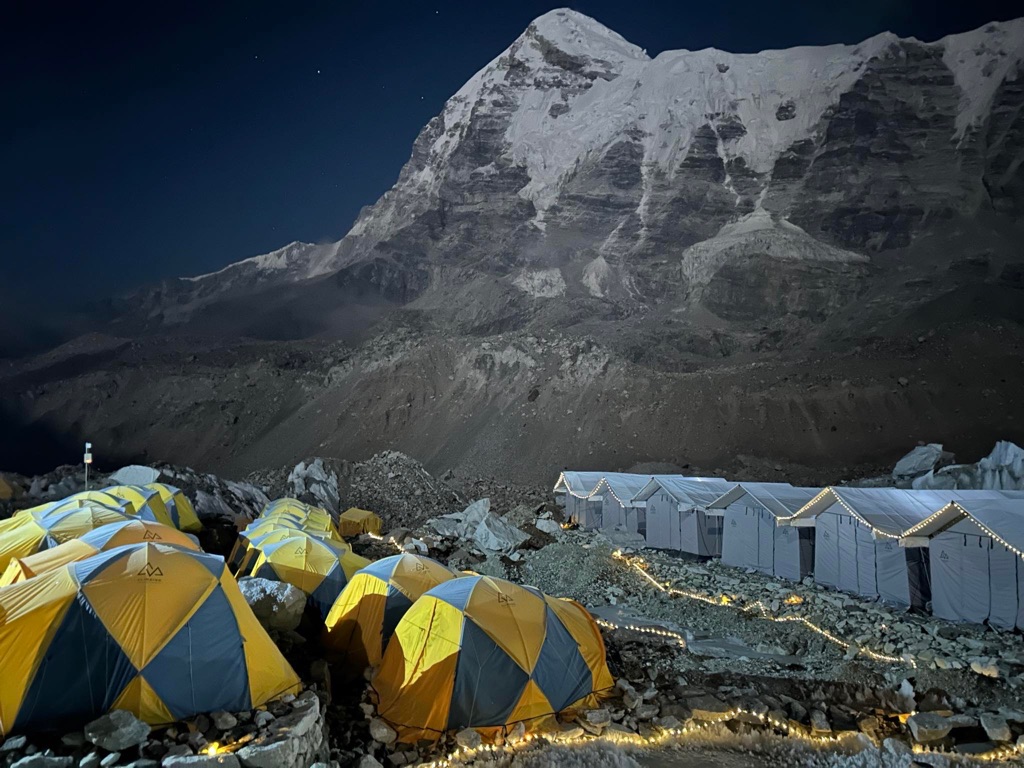
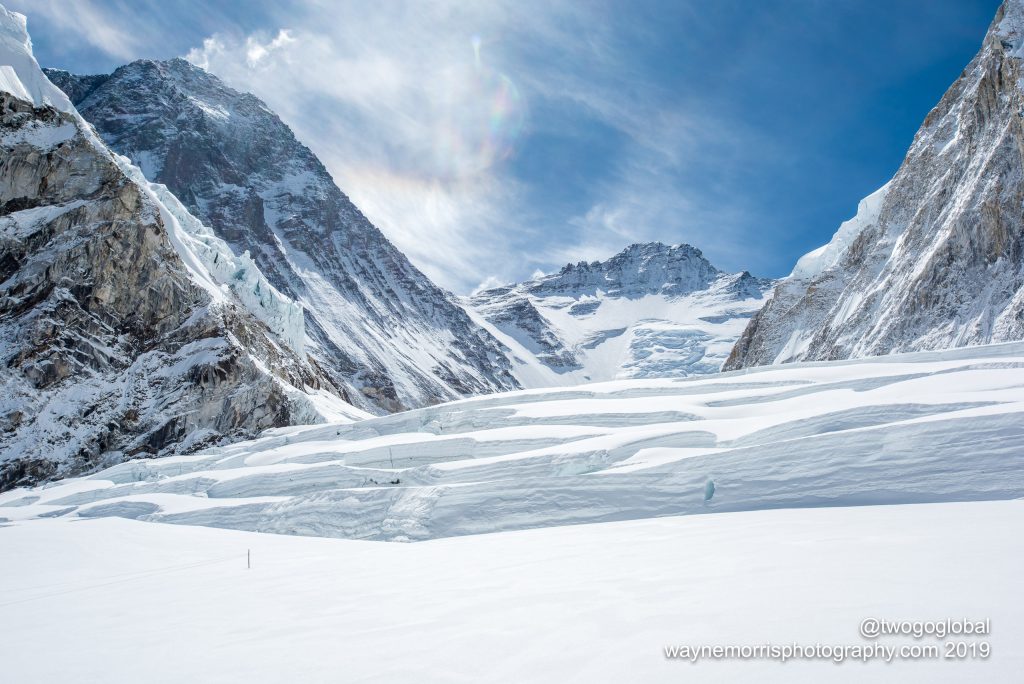
Another Puja for our Speed Ascent and Personal Sherpa Teams
Greetings from Nepal!
With everyone now at our Everest Base Camp, we celebrated with another Puja today for those who missed the first one, including our 30-Day and 40-Day Speed Ascent climbers and our Personal Sherpa team.
Meanwhile, our 1:1 Private Climbers and their guides are getting higher in the Western Cwm. Earlier today, they tagged Camp 2 and are now resting easy back at Camp 1 for the night. The team made great time, and tomorrow, they will retreat back to Everest Base Camp, wrapping their first rotation.
Our Personal Sherpa climbers head out early tomorrow for their first rotation up through the Khumbu Icefall to Camp 1.
 We're always dreaming of the big mountains, even when we're at Everest Base Camp. (Photo Credit: Mike Hamill)
We're always dreaming of the big mountains, even when we're at Everest Base Camp. (Photo Credit: Mike Hamill)
With one rotation complete, our Western Guided team enjoyed a well-deserved rest day today as they strategized for their next rotation window. They are looking at heading up for their second rotation on Monday or Tuesday with our 40-Day Speed Ascent team folding in.
 CTSS's Everest Base Camp is glowing under the full moon! (Photo Credit: Mike Hamill)
CTSS's Everest Base Camp is glowing under the full moon! (Photo Credit: Mike Hamill)
Our Sherpa team is doing an incredible job and working incredibly hard for all our climbers. Today, they spent the day fixing lines to Camp 3 to establish camp and stock the upper mountain.
All is well and on schedule in the Himalayas, and happy Anzac Day to all of our climbers, friends, and followers from Down Under!
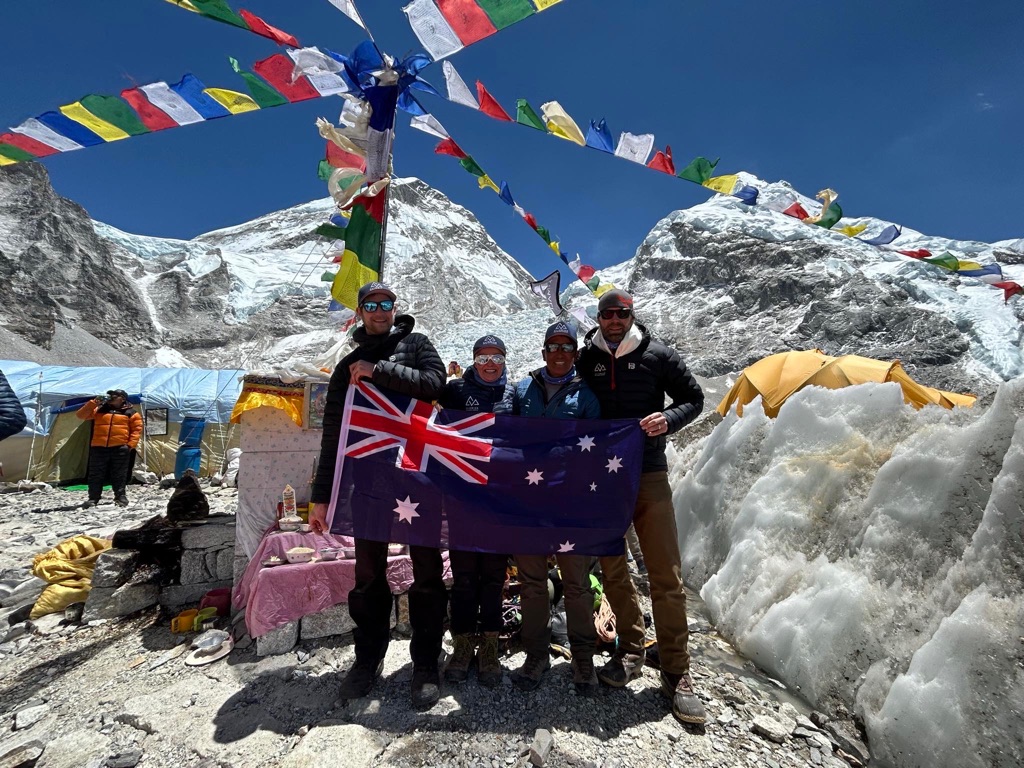

On Top of the World: Julie’s Seven Summits Journey
On Top of the World: Julie’s Seven Summits Journey
In the heart of the Appalachian Mountains, there’s a woman who embodies the spirit of adventure and resilience: Julie McKelvey.
With the 2024 Mount Everest season in full swing, we wanted to take a moment to look back at Julie’s monumental achievements. Last year, Julie stood on the summit of the world’s tallest peak—Mount Everest—and just a few months later, she completed her journey to climb all of the Seven Summits with a celebratory jaunt up Mount Kosciuszko with friends, family, and a bottle of non-alcoholic bubbly in tow.
Julie’s journey stands not only as a testament to her own physical prowess but also as a narrative of personal transformation. Flooded with emotion, she reflects on her journey from addiction to standing on top of Mount Everest. Julie knows firsthand the power of the mountains and their ability to turn ordinary people into extraordinary achievers.
Like many of us, Julie wasn’t a born mountaineer. Her dream to summit each continent’s tallest peak started unexpectedly on the slopes of Mount Fuji just as the sun rose above the clouds. Her dad’s gentle nudge to climb Mount Fuji sparked something in Julie that grew into a grand goal to climb all Seven Summits in just five years.
However, as you might imagine, there were a multitude of expected and unexpected barriers and challenges for Julie to overcome.

- Climbing Mount Everest, let alone all Seven Summits, is expensive, but as Julie pointed out, “If you go on the cheap, you might not be alive.” Julie personally funded all of her expeditions through sheer hard work and perseverance. Beyond funding her own dreams, Julie also saw this as an opportunity to give back and garner more support. Thus, she launched a “Summit for Sound” campaign in conjunction with her Seven Summits journey. This campaign supported the Miracle-Ear Foundation and raised more than $250,000, giving hundreds of families the gift of sound.
- The team dynamic is just as important as your training plan. Julie attributes climbing with CTSS as one of the major keys to her success. During our conversation, Julie often remarked that she was taken aback by what she heard from other guides and outfitters on the mountain, which serves as a reminder of why CTSS has a No D*ckheads Policy. Going with the right company matters and Julie felt confident in choosing CTSS because she knew her teammates had been vetted and her guides were not only professional but also some of the best in the guiding world. We were honored to be the right fit for Julie and to have been part of her Seven Summits journey.
- Progress, progress, progress. You don’t wake up one day ready to climb Mount Everest, or at least most of us don’t! Julie understood that progression climbing was a key piece to her success, but she also had to trust the process. Julie notes that if she had tried to figure it all out before starting her Seven Summits journey, she wouldn’t have done it. When it came down to planning and preparing, Julie was open to advice and taking it one climb at a time, continually training between climbs and slowly building her skills and experience base to move onto progressively bigger and bigger objectives. Here at CTSS, we specialize in individualized progression advice that is tailored to fit our climbers’ lives, experience levels, budgets, and work/life balance, and we are committed to helping them find a realistic pathway to their goal rather than offering one-size-fits-all advice.
- Being a woman on the mountain in a male-dominated sport is still a struggle. Climbers like Julie are demonstrating that representation in the mountains matters. They are shattering false narratives and showcasing that women, minorities, and other marginalized communities belong in the mountains. Julie’s attitude was to show up – just like any of her male counterparts – prepared, having put in the training and ready to perform. She held her own amongst the best of them. At CTSS, we recognize that having a space for women to grow and learn in conjunction with other women is empowering, which is why we offer both of our Alpine Academies in an all-women’s format in addition to our coed offerings.
At the end of the day, Julie overcame each and every obstacle and reached her dream.
Let’s take a little trip down memory lane and recap Julie’s Seven Summits journey.
In 2018, Julie climbed Mount Kilimanjaro (Africa – 19,341 feet), and it was during dinner when one of her guides suggested that she should climb all Seven Summits. She was already well on her way to tagging the first of the seven peaks! When Julie returned to the States, she took to Google, plugged in climbing the Seven Summits, and quickly arrived in the inbox of Mike Hamill, owner of CTSS.
With a progression mentality front of mind and the support of the CTSS team, Julie was off to climb Mount Elbrus (Europe – 18,510 feet) alongside Mike. During this 2019 summit climb, Mike and our team at CTSS showed Julie the ropes, quite literally. Julie learned to use crampons, how to navigate fixed-line climbing, and (one of our specialties at CTSS) techniques to climb efficiently and take care of yourself.
In 2020, Julie’s pace started to pick up after her summit of Aconcagua (South America—22,841 feet), where she received the advice to “get in the groove, train, and GO!” And that’s exactly what Julie did. In 2021, Julie trained with Mark Postle from Evoke Endurance and worked with Rebecca Dent from High-Performance Dietitian, who helped set her up to summit Denali (North America – 20,310 feet ) and Vinson (Antarctica – 16,050 feet), but two weeks before her 2021 expedition to Denali, Julie badly hurt her foot during training. As you might have guessed, it’s pretty hard to cancel such a big trip and commitment at the 11th hour, so Julie pushed forward. However, between Camps 2 and 3, Julie couldn’t move her foot effectively on the steep ice. Her guide did what any great guide would do and turned her around. When Julie reflected on this moment, she smiled, knowing this was exactly the experience she needed to go through to remember to put safety above summits and to get to where she is today.
With plenty of time for her foot to heal, Julie had a successful expedition to Vinson in 2021, where she met Tendi Sherpa, who is widely regarded as one of the most respected guides in the world. During their 2021 Vinson expedition, Julie climbed right behind Tendi, and she remarks on how Tendi calmed her down and led with grace and strength. Julie learned one of the most valuable lessons that we hope all mountaineers discover: it’s not about conquering anything. It’s about finding a place within yourself where you are emotionally and physically ready to be one with the mountain. The mountain simply grants you passage, if you’re lucky! Your job is to make sure you are ready.
By 2022, Julie had completed four of the Seven Summits, leaving a second attempt on Denali, Mount Kosciuszko, and, of course, Mount Everest on the table. With much joy, Julie summited Denali in 2022 and used this peak to springboard her training for a summit bid on Mount Everest (Asia – 29,032 feet) in 2023. The story that unfolded on Everest in the spring of 2023 is a true testament to Julie’s spirit of adventure and resilience.
In March 2023, Julie caught her flight to Kathmandu, Nepal, where she came back together with Tendi Sherpa, her guide on Vinson, who had been such a powerful influence on her.
Along the Everest Base Camp trek through the Khumbu Valley, Julie felt sick but pushed through to the summit on Lobuche East with ibuprofen and rest. However, at altitude, a simple cough can turn any mountaineer around. By the time Julie reached the high camps on Everest, her cough had worsened significantly. Tendi helped Julie make a decision to call it off and head back to Everest Base Camp and eventually Kathmandu for further treatment. Julie came down with a laundry list of problems, including pulmonary edema and multiple infections in the lungs.
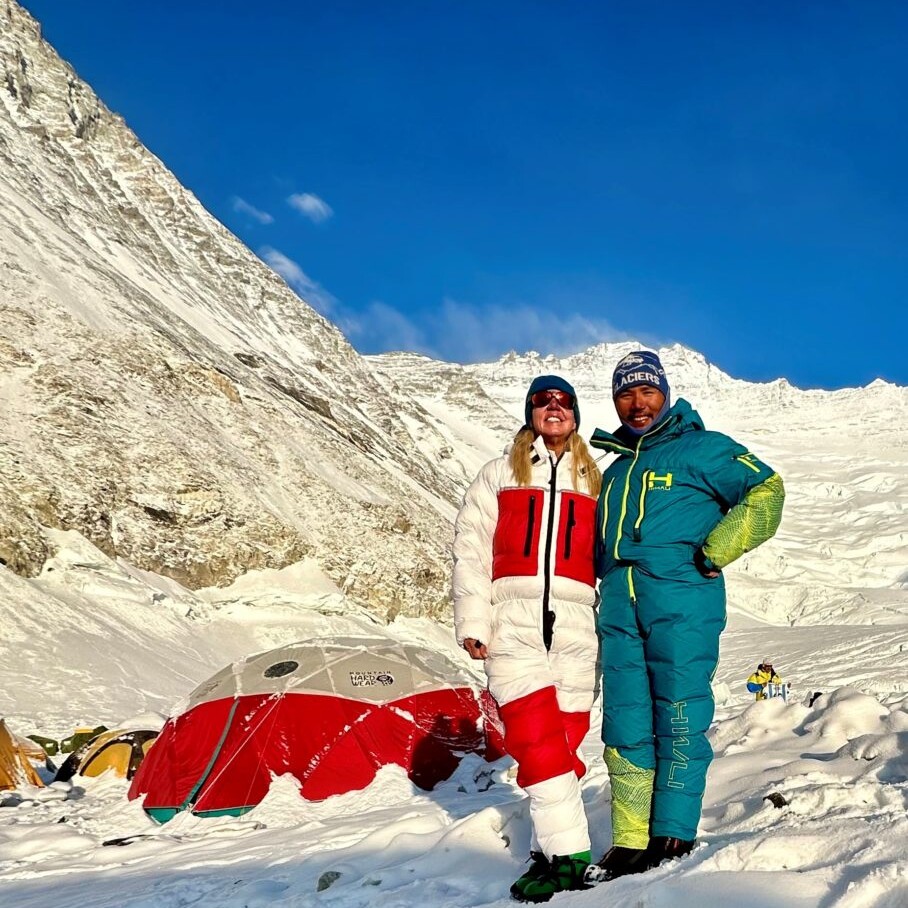
For many of us, this would be the point where we start making plans to head home and consider another attempt in the future. But as you’ve learned, Julie is resilient. She was ready for this, she trained, she prepared, and this was her season. With the support of CTSS to try again in the same season, and under the care of the doctors in Kathmandu, Julie was patient and let her body recover. While the doctor warned there was a 60% chance that her lung issues would come back at altitude, for Julie, those were good enough odds to make a second attempt. After more than a week in Kathmandu, Julie lost some of her valuable acclimatization, so the process started over again. But summit day finally arrived, and Tendi (who had also just fought off the same illness as Julie) was by her side. They left Camp 4 at 10:30pm facing the ferocious cold and wind. Julie recalls this moment with a hint of worry in her voice, but ultimately, knowing and trusting Tendi was her ticket to push forward. About halfway through the climb, she realized her Garmin had frozen, and it was just her, Tendi, and the summit.
Julie shared, “A calm came over me, and I thought… oh my God, I am doing this!”
And Julie sure did. On May 23, 2023, Julie stood on top of the world at the summit of Mount Everest. The journey from Camp 4 to the summit and back took 15 hours,tent door to tent door, a testament to the training and the preparation Julie had done mentally and physically. And now, all that stood between Julie and the completion of her Seven Summits journey was a celebratory ascent of Mount Kosciuszko (Australia – 7,310 feet) with her family in tow.
On December 29, 2023, Julie stood proudly on the summit of Kozi in the midst of 50-mile-per-hour winds with a giant smile plastered on her face. Julie had done it in five years; she had summited the tallest peak on each of the seven continents. Julie’s Seven Summits journey was not just a culmination of physical training but a testament to her resilience in the face of adversity. It was a journey of self-discovery, where the true measure of success lay not in reaching the peak but in finding the courage to confront the unknown and embrace the challenges that lay ahead.
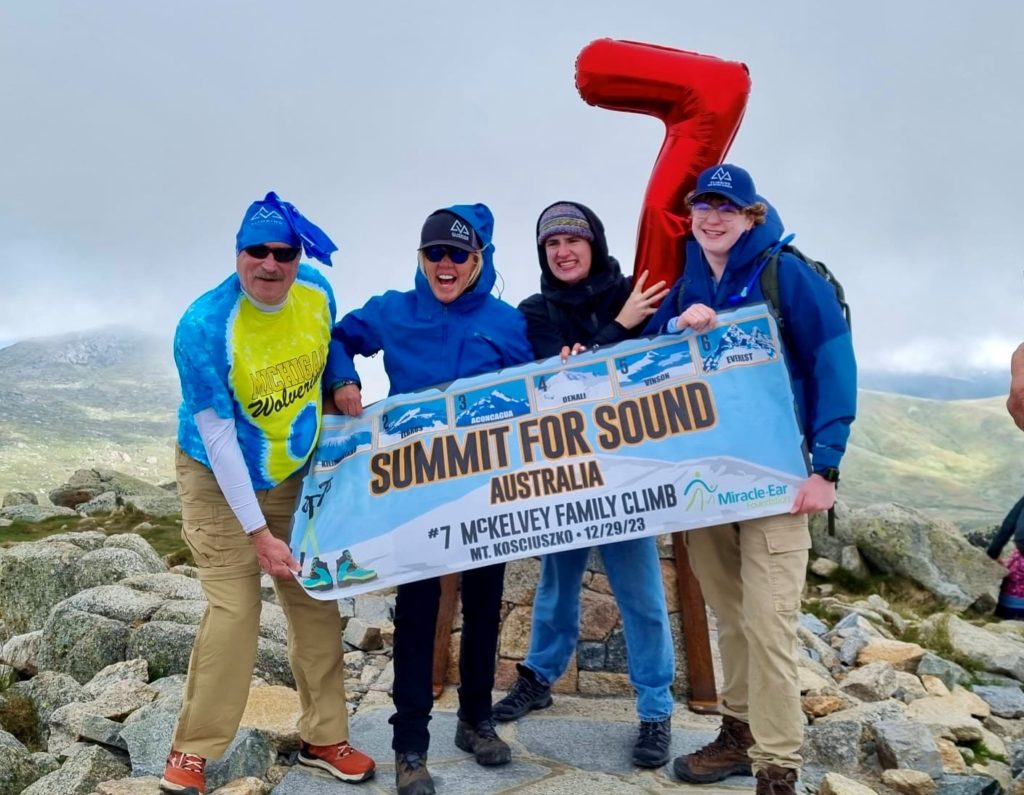
As wild as this might sound, Julie’s journey didn’t stop there. Like many climbers, Julie grappled with one of the most debated in the mountaineering community: Is Carstensz Pyramid or Mount Kosciuszko the true Seventh Summit? This debate raises the broader question of how we define a continent: culturally or geologically? While both viewpoints have merit (you can read more here), climbers like Julie embody the spirit of embracing challenges and possibilities rather than being confined by definitions. Since climbing both peaks always an option (and it’s our favorite option), Julie doubled down, and on October 26, 2024, she added another extraordinary chapter to her mountaineering journey by summiting Carstensz Pyramid (Oceania – 16,024 feet).
This elusive peak, nestled in the heart of West Papua, Indonesia, reopened in 2024 to select operators, including CTSS, after being inaccessible to most climbers for more than five years. Julie’s achievement underscores not just her unwavering dedication but also her role in reigniting interest in one of the Seven Summits’ most debated peaks.
As we reflect on Julie’s Seven Summits journey, it’s clear that her legacy extends far beyond the peaks she’s climbed. It’s a story of resilience, community, and the transformative power of adventure. Congratulations, Julie, for continuing to inspire us all!
To all those aspiring mountaineers, Julie wants you to know…
There are so many things out of your control once you start an expedition, so controlling everything I could beforehand was a huge part of my success. Regardless of the busyness of my life, training was a priority, and I worked the rest of my life around that. Achieving this kind of goal requires an incredible investment in both time and effort, and because of how badly I wanted it, I had to become very efficient with my time, how it was spent & make sacrifices. My goal was to show up on each expedition as fit and ready as possible, and if it didn’t work out due to one of the million reasons trips come unraveled, it wouldn’t have been because I wasn’t fit enough. Throughout the journey, I’ve seen countless people on the mountain who simply weren’t trained or ready to be there and ended up having to turn around because of that. Being a business owner, wife, and mother doesn’t leave a lot of room to re-do any of these big trips where I’m away from so many people who depend on me. When I started this, I had absolutely no knowledge of climbing—zero. So, surrounding myself with the best people I could find who had more experience than me and who I trusted was critical – and through the CTSS community is where I met all of them who in some way helped me achieve this goal and, in the process, I’ve made lifelong friends which is a huge bonus!
Also, the summit only matters if you get home safely! On Everest, Tendi kept reminding me of the “true summit,” which is when I safely get back home to my family. That requires expert-level guides and the attitude of whatever they say goes, even if that means no summit.
This journey has transformed my life in ways I never expected, and after each expedition, I came home a better version of myself. There is something so powerful about the mountains and what they have to offer when we get quiet enough to listen…
All Summiteers are at Everest Base Camp
Today, our Private 1:1 climbers with their respective guides started their first rotation. The early morning alarm went off at 2am, and in no time, they were out of Everest Base Camp and moving strong. They will stay at Camp 1 tonight, tag Camp 2 tomorrow, and then retreat back to Camp 1 for a second night before dropping back to the comfort of Everest Base Camp.
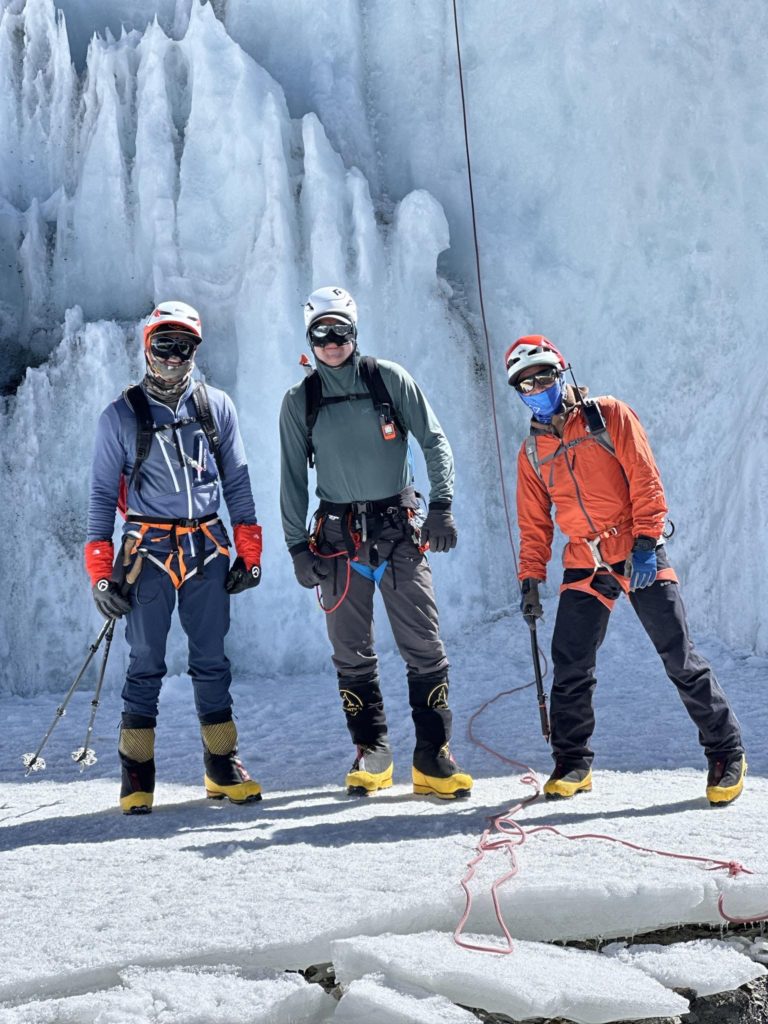 Making moves in the upper mountain for our private climbers. (Photo Credit: Dorjee)
Making moves in the upper mountain for our private climbers. (Photo Credit: Dorjee)
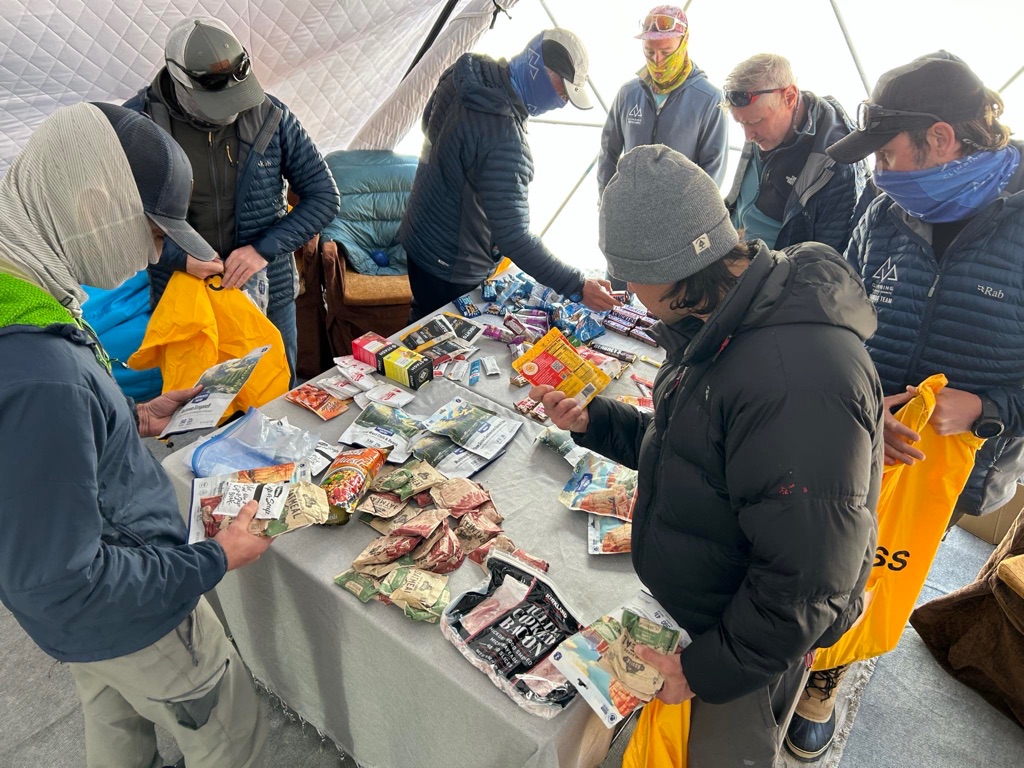 Nutrition is key for all of our climbers, especially on the upper mountain.
Nutrition is key for all of our climbers, especially on the upper mountain.
Our Western Guided team completed their first rotation and are back at Everest Base Camp to rest and recover.
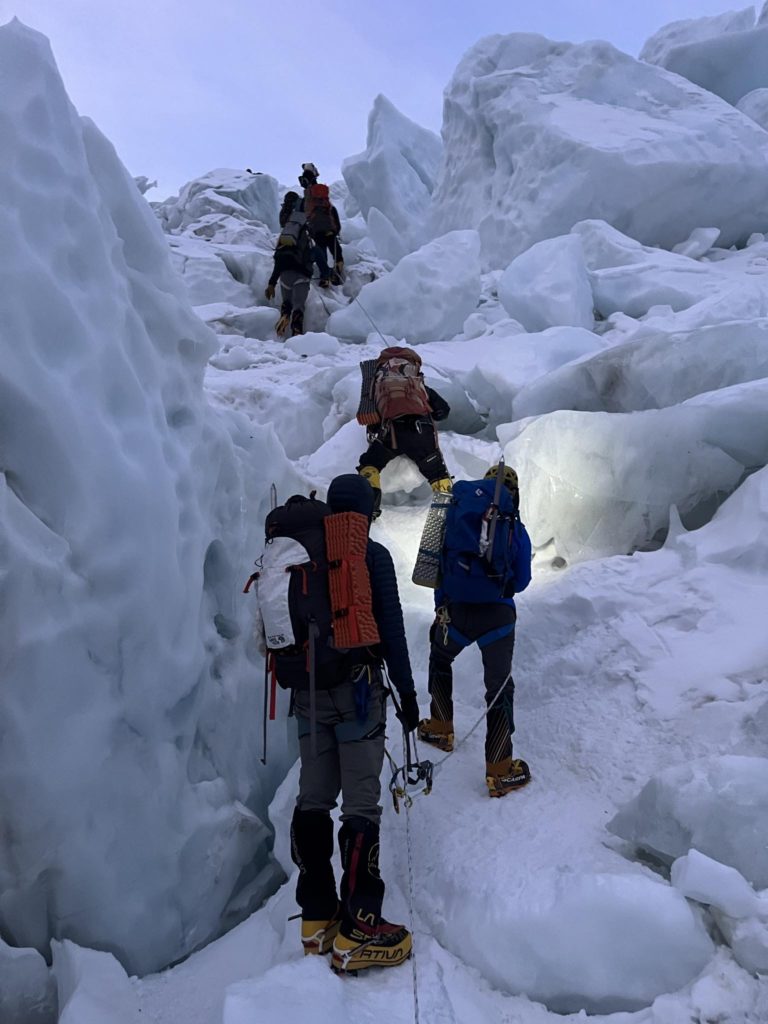 The Western Guided team moving through the Khumbu Icefall (Photo Credit: Nani S.)
The Western Guided team moving through the Khumbu Icefall (Photo Credit: Nani S.)
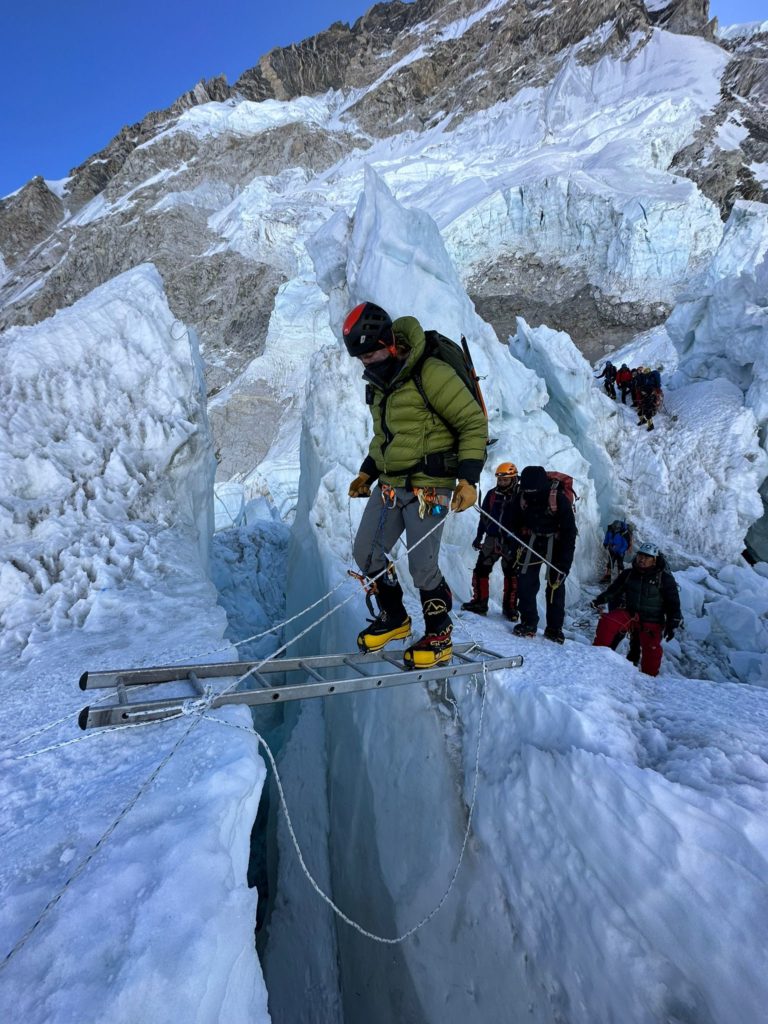 And the Western Guided team continues up (Photo Credit: Josh M.)
And the Western Guided team continues up (Photo Credit: Josh M.)
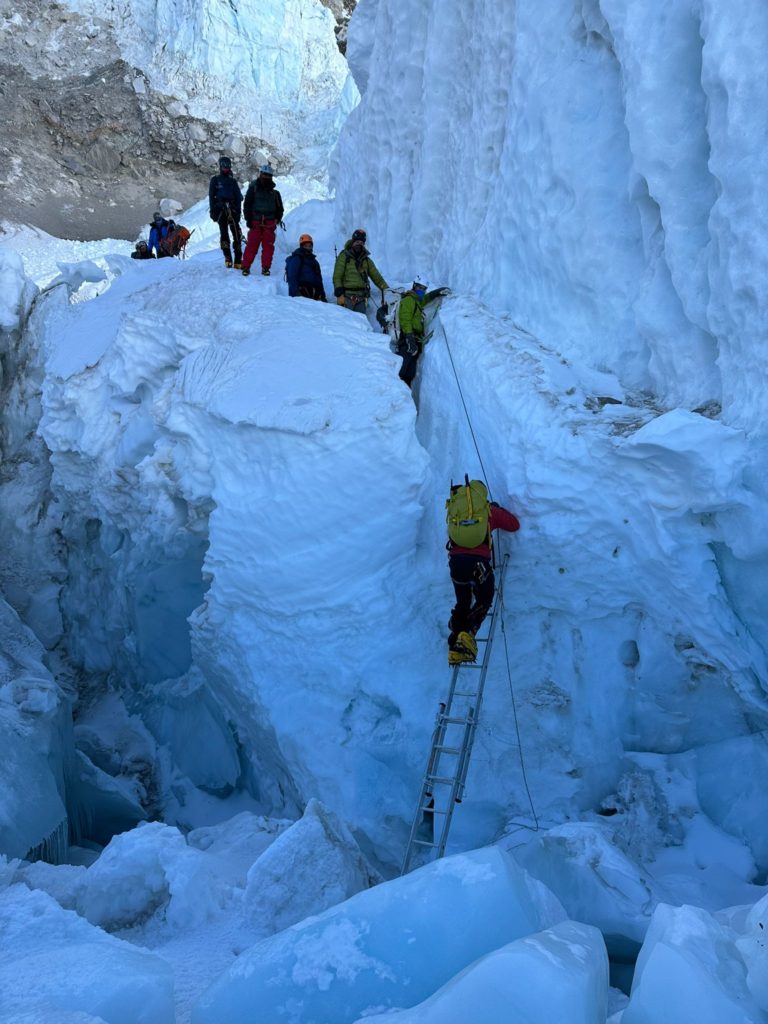 And up they go for their first rotation on Mount Everest. (Photo Credit Josh M.)
And up they go for their first rotation on Mount Everest. (Photo Credit Josh M.)
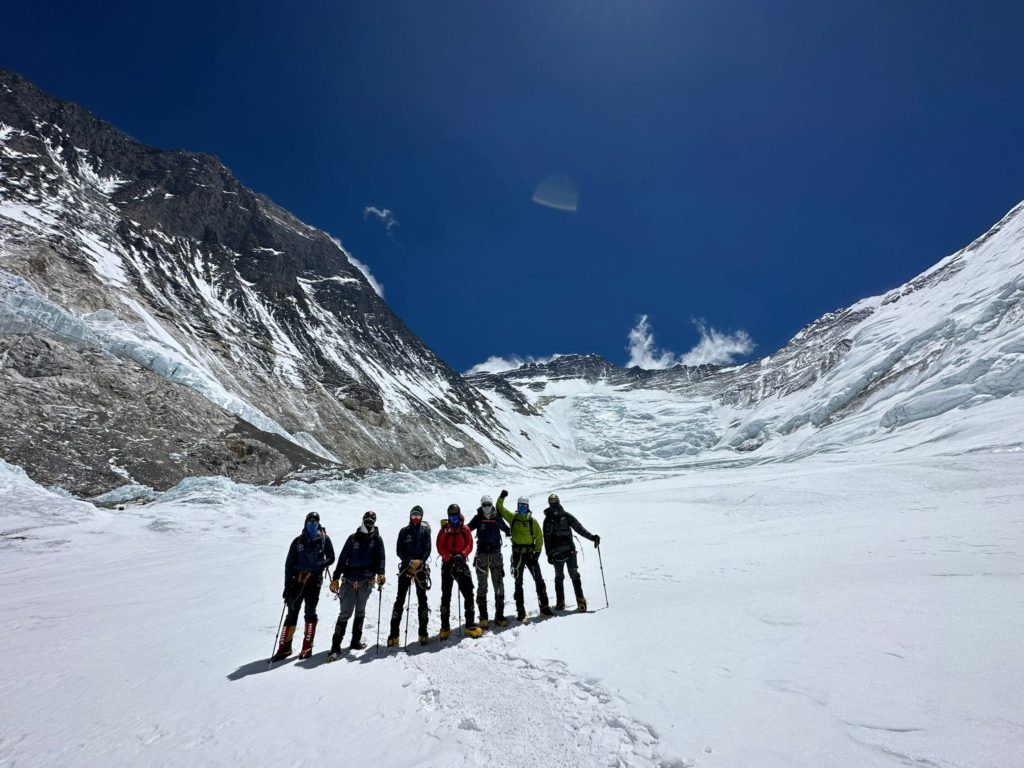 All is well for our Western Guided team. (Photo Credit Josh M.)
All is well for our Western Guided team. (Photo Credit Josh M.)
At Base Camp, our Personal Sherpa climbers have been refining skills and training on the glacier, and our 40-Day Speed Ascent team has been continuing their acclimatization with a hike to Pumori's Camp 1. Pumori is a mountain along the Nepal-Tibet border, just west of Mount Everest.
We have one climber joining our team for a 30-Day Speed Ascent. Earlier today, climber Jesse and CTSS guide Tomi arrived at Everest Base Camp and will begin preparations for their speed ascent.
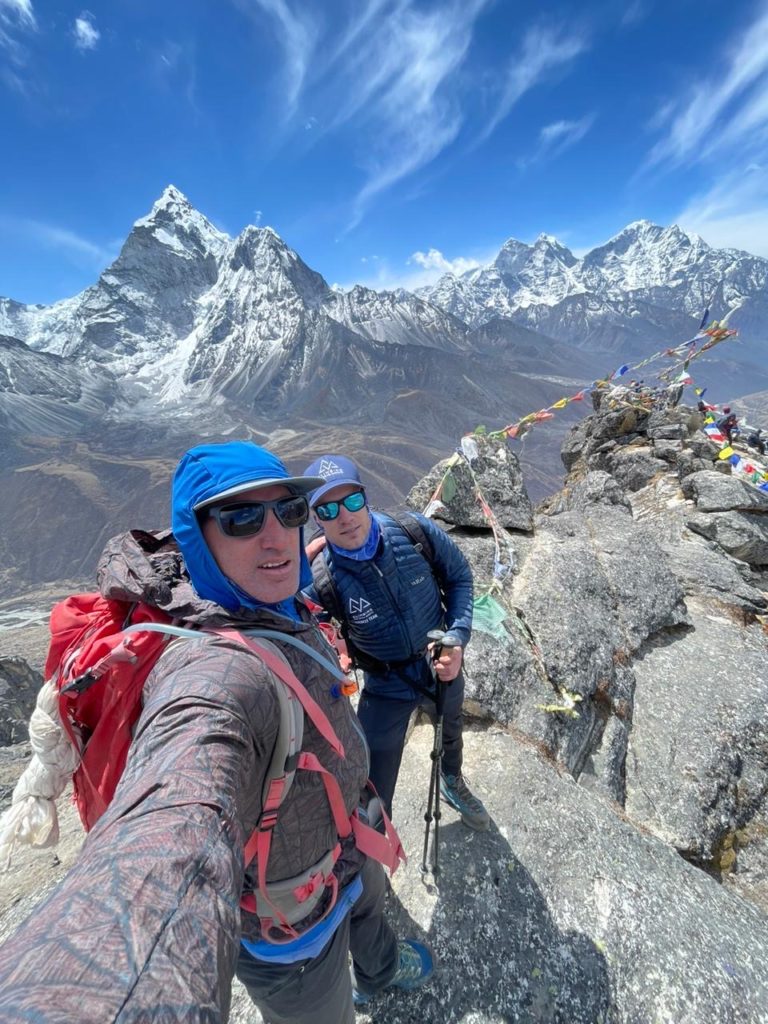 Welcome to Everest Base Camp to our 30 Day Speed Climber Jesse and Guide Tomi
Welcome to Everest Base Camp to our 30 Day Speed Climber Jesse and Guide Tomi
We bid farewell to our incredible Lobuche climbers & 3 Peaks team, who worked hard against challenging conditions and terrain in Nepal. A huge congratulations from CTSS to the entire team on their successes.
We also waved goodbye to our Gokyo trekkers, who took an intrepid and exciting extension to the Gokyo region. This add-on extension is a great way for our Everest Base Camp trekkers to extend their time in Nepal, climb the famous Cho La Pass (5,420m), escape the madding crowds, and view the stunning Gokyo Lakes before rejoining the main trail at Namche Bazaar for the final day's trek back to Lukla.
All is smooth and on schedule in the Himalayas. And, the sunsets have been incredible!
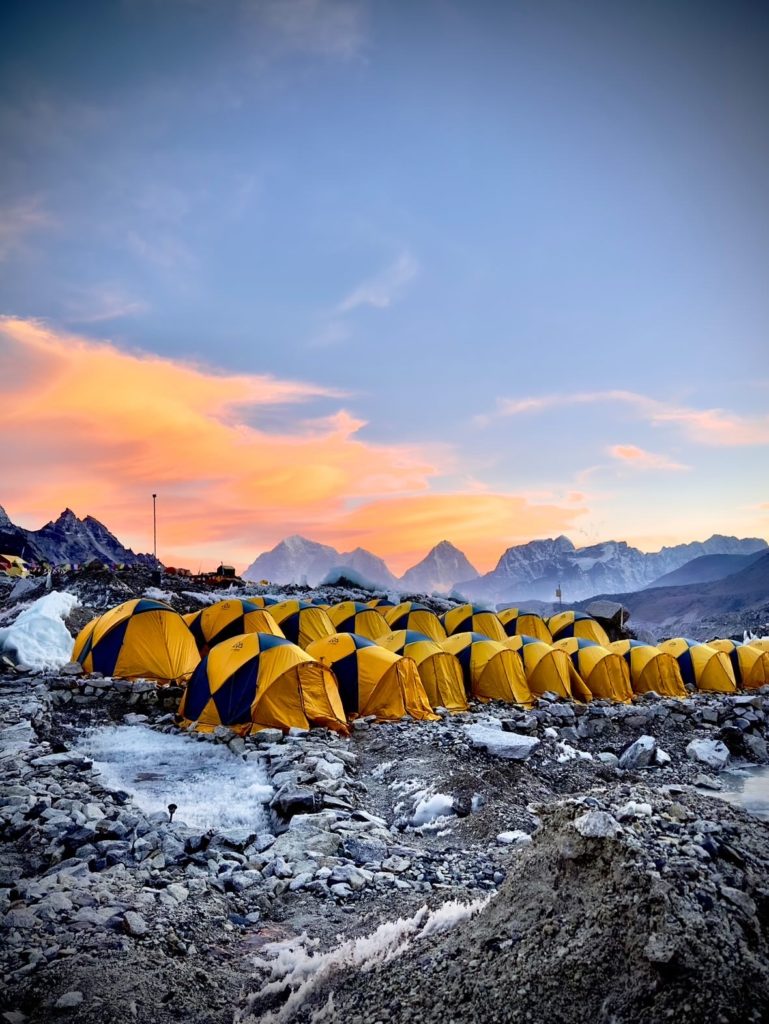 Everest Base Camp at sunset (Photo Credit: Ruben Salinas)
Everest Base Camp at sunset (Photo Credit: Ruben Salinas)
Everest Rotations have Begun!
It's Monday, and we have a few updates from our teams in Nepal.
The time has come! Our first climbers, the Western Guided team, started their first Mount Everest rotation. They left before dawn this morning, climbing through the icefall, and are now at Camp 1. Tomorrow, they'll work toward Camp 2.
Our Private 1:1 climbers continued their training drills over the weekend. Today, they will pack and prepare for their first rotation, close behind the Western Guided team. Hot on their heels, the Personal Sherpa climbers have settled into Everest Base Camp and are working through skill drills near camp. Towards the end of the week, they'll start uphill on their first rotation.
Here are a few photos from our guide, Abiral, who is supporting our Private 1:1 climbers.
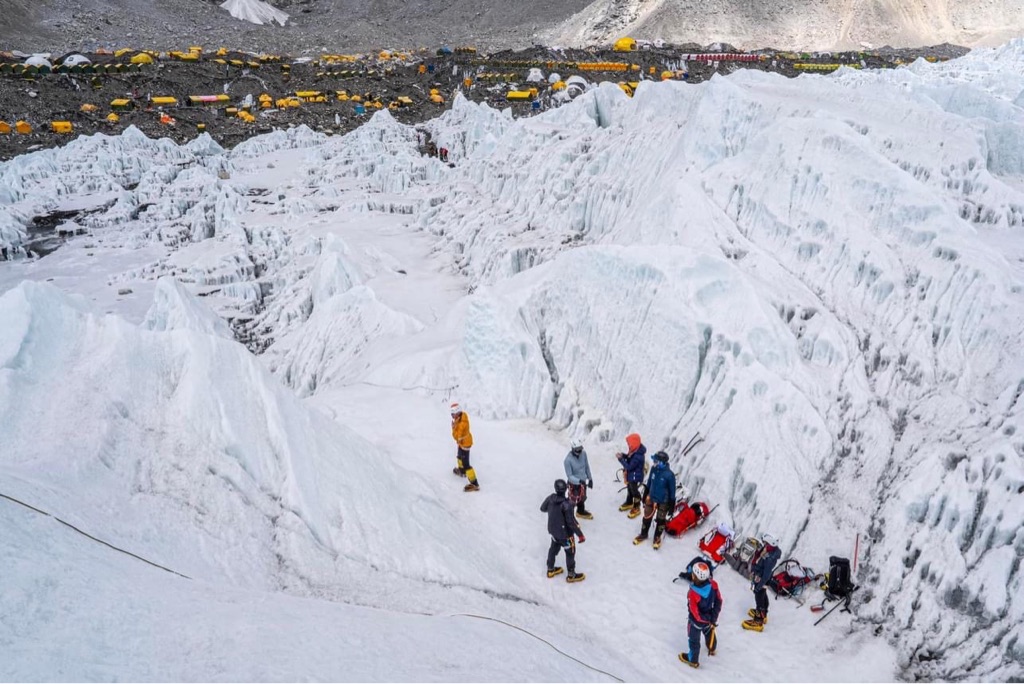 A birds-eye view of the skills training session with Everest Base Camp in the background.
A birds-eye view of the skills training session with Everest Base Camp in the background.
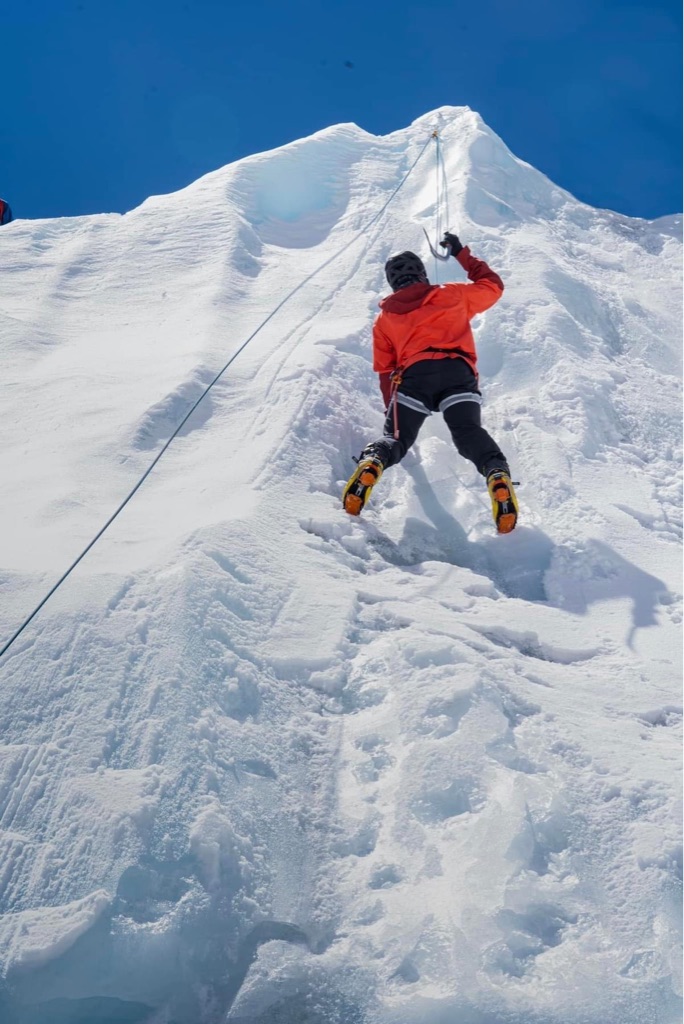 There is nothing like swinging ice axes under perfect conditions on the Khumbu Glacier.
There is nothing like swinging ice axes under perfect conditions on the Khumbu Glacier.
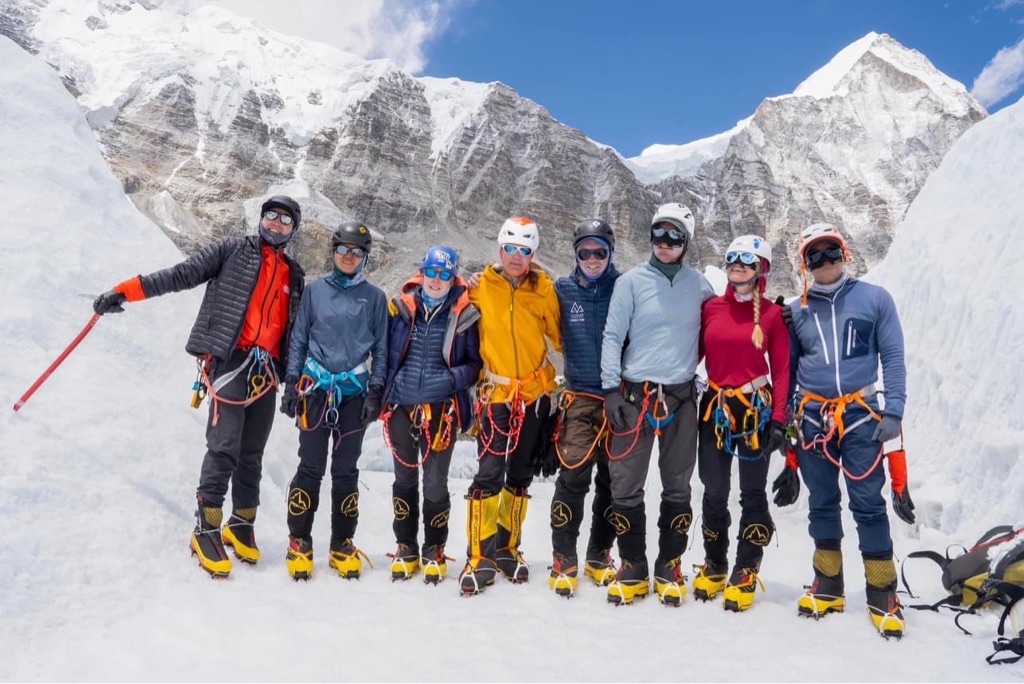 Training on the Khumbu Glacier was a success - well done, climbers!
Training on the Khumbu Glacier was a success - well done, climbers!
The Speed Ascent team successfully summited Lobuche and are now at Everest Base Camp for drills, relaxation, and rotations. A huge congratulations to the summiteers:
- Brian J
- Ruben S
- Patrick M
Our Lobuche climbers will fly from Lukla back to Kathmandu with our 3 Peaks team headed that way shortly after!
And a quick note to the family and friends of climbers, guides, Sherpas, and other staff at Everest Base Camp: The Wi-Fi has been a challenge, so if you are getting fewer updates from your loved ones, that is normal. Please don't worry. They are working hard with the local provider to improve connection and speed.
Rest assured, all is well in the Himalayas!
Farewells and Arrivals in the Himalayas
April 20th
We hope you are enjoying your weekend. Here are some updates from our teams in the Himalaya.
Our Everest Base Camp team flew by helicopter back to Kathmandu and are all safely checked into the Hyatt, enjoying hot showers and the creature comforts of town. What a great group of adventurers. We'll be sad to wave farewell to such a great group as they head home in coming days but congratulate them on their incredible success and strength.
Our Gokyo trekkers reached Gokyo yesterday and explored the region today. Seeing the Lakes and Peaks in this spectacular region. They will begin their downtrek tomorrow.
Our 3 Peaks team have summited Island Peak (19th April) and in doing so rounded out an incredible 3 mountains in under 3 weeks. In a low snowfall season, the routes have been more technical and challenging and we are so impressed by all they have achieved. A special shout out to both Monika Z & Faris R who pulled off 3/3! Today they moved from Chukkung to Pangboche and tomorrow they will drop further down to Namche. We looking forward to seeing them in KTM in coming days.
Our Lobuche team did a big day with an 8.5hour down trek from Pheriche to Namche today. Tomorrow is their last day on the trail back to Lukla where they will fly back to Kathmandu to celebrate.
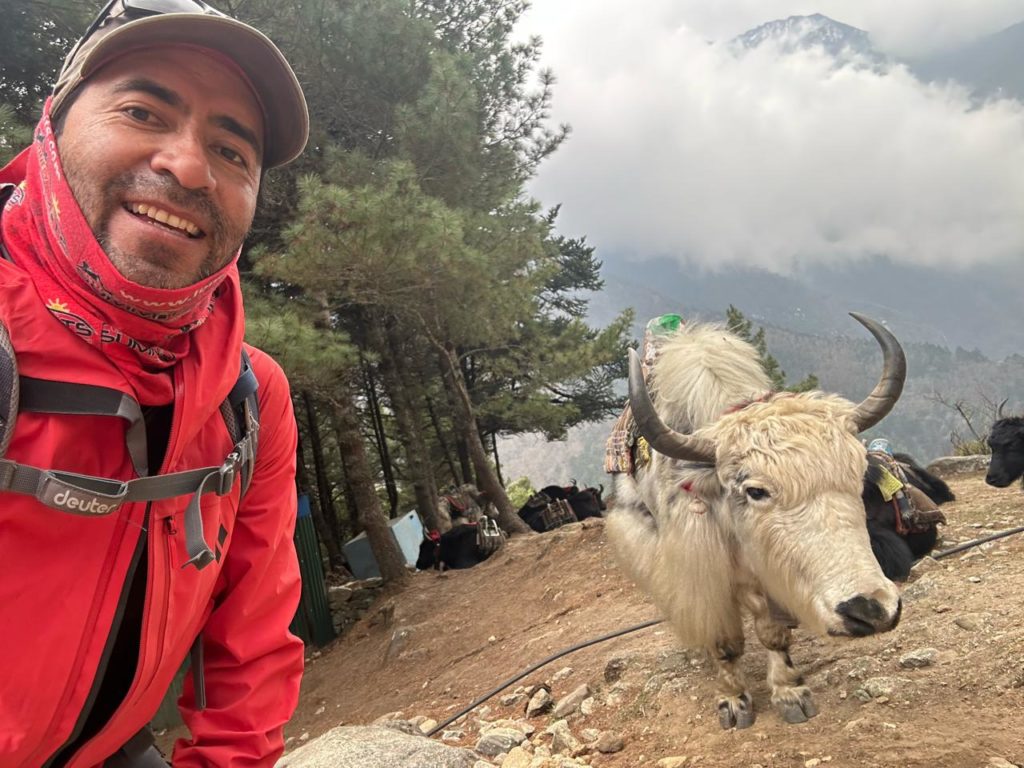
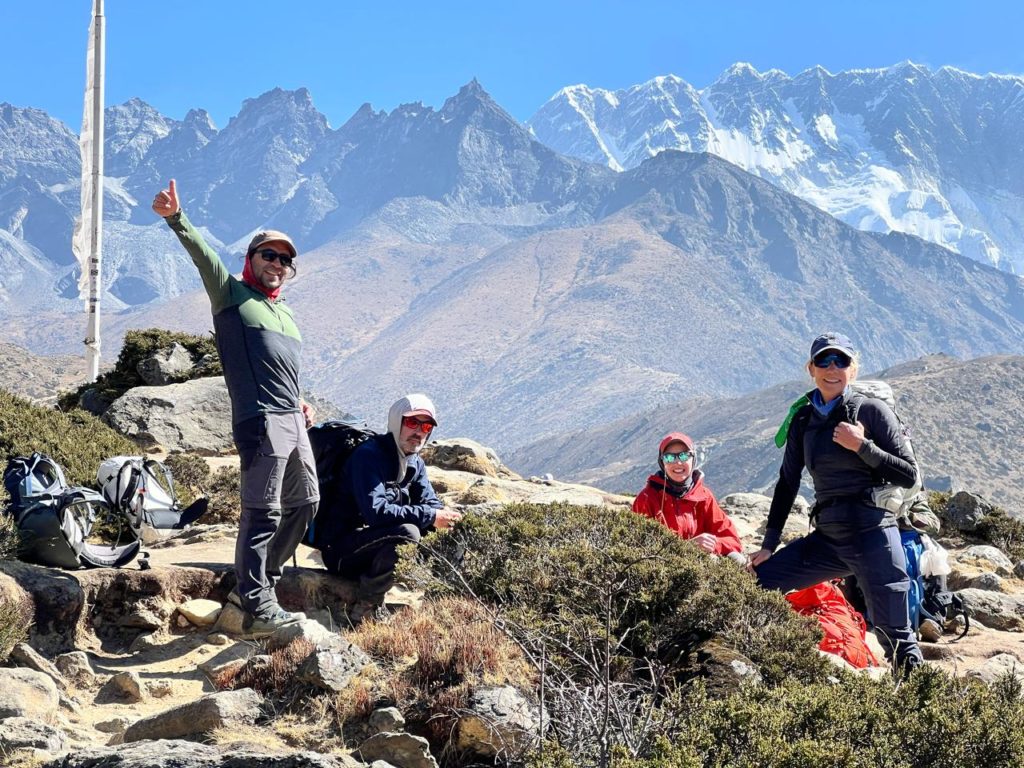
While we are preparing to say farewell to many of our climbers as they round out their trips, we welcome into Kathmandu our 30 Day Speed Ascender Jesse who arrived safely today. He is awaiting some delayed baggage but once that has caught up to him, he and Guide Tomi will heli up to Pheriche and move into Everest Base Camp.
Our Everest summit team have kept busy over the past few days keeping their acclimatization by doing hikes up Pumori and keeping skills current with lots of practice of ladder crossing, fixed line ascension and rapelling on the glacier by camp. They will now start preparing to head uphill on their first rotations now that the icefall route is fixed and open. A delayed start but not a big deal in the scheme of the expedition.
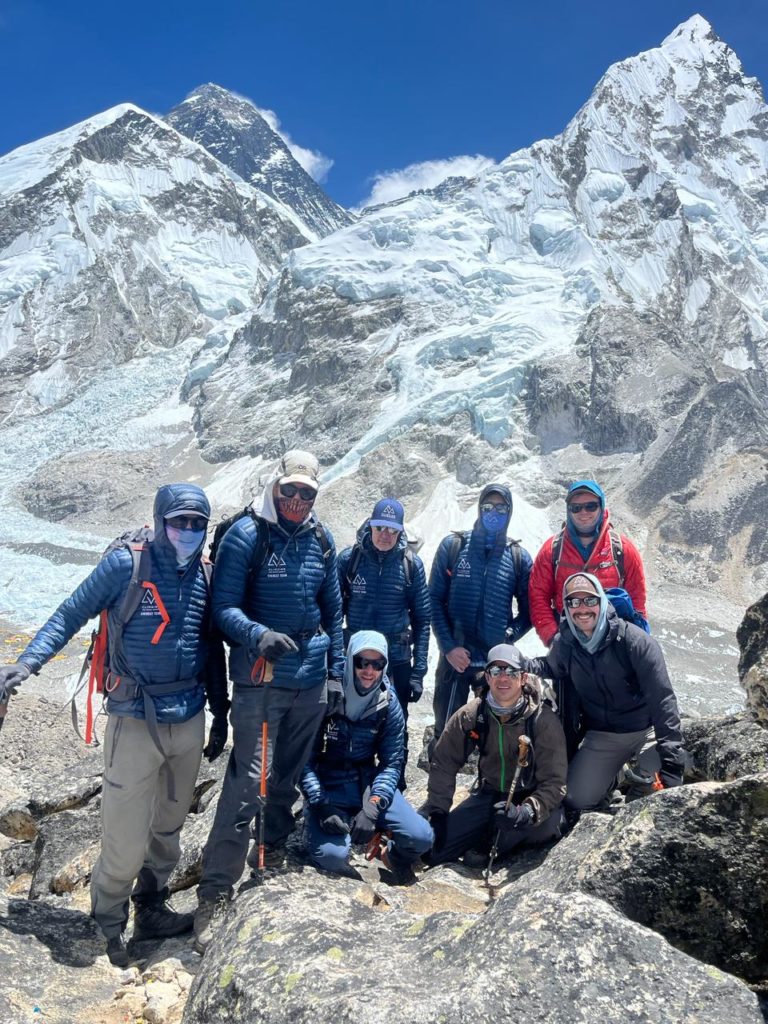

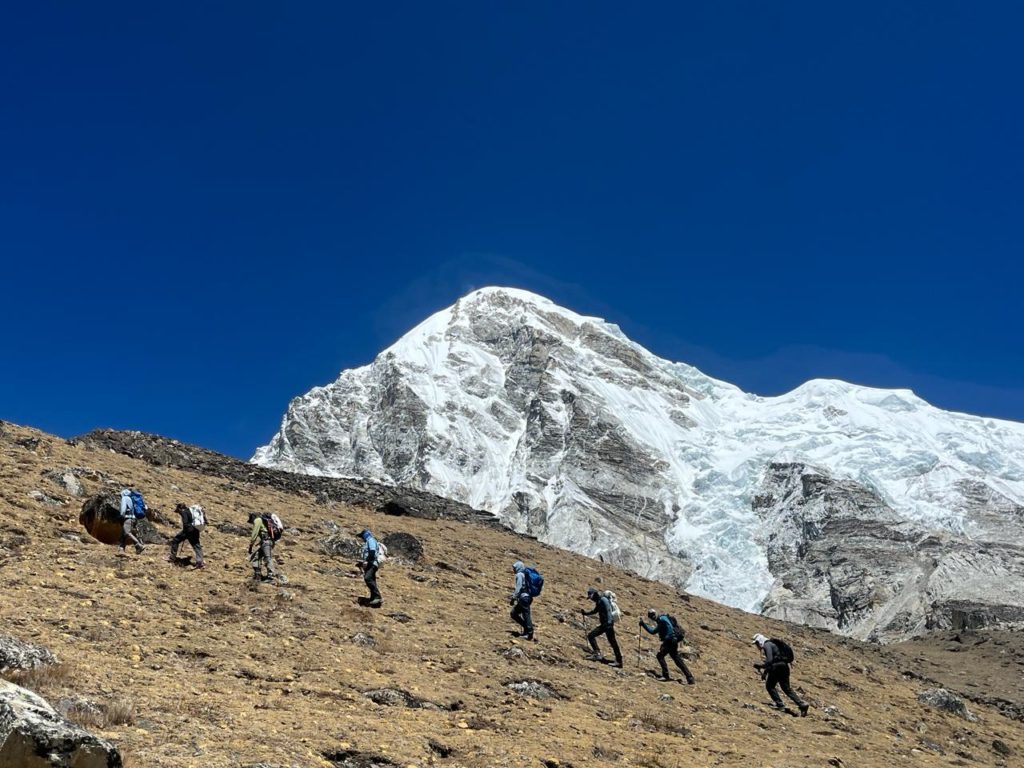
All is well in the Himalaya - we hope you have a great weekend.
Alpine Starts on Lobuche
Happy Friday! Here are the updates from our teams in the Khumbu Valley and at Everest Base Camp. We will be back on Monday with another update - stay tuned.
Our 40 Day Speed Ascent team will head to the summit of Lobuche tomorrow, kicking off with an alpine start in the wee hours of the morning. The route to the Lobuche summit has been challenging this year because of the low snowfall. These conditions present much more technical terrain. We wish the entire team all the best of luck!
Meanwhile, our Everest Base Camp trekkers have successfully returned to Lukla, rounding out their trek. Congratulations to all! There have been some weather delays in Lukla over the last few days, which has created a bit of a flight back up. Our team has elected to take a helicopter back to Kathmandu tomorrow, which will be a scenic treat!
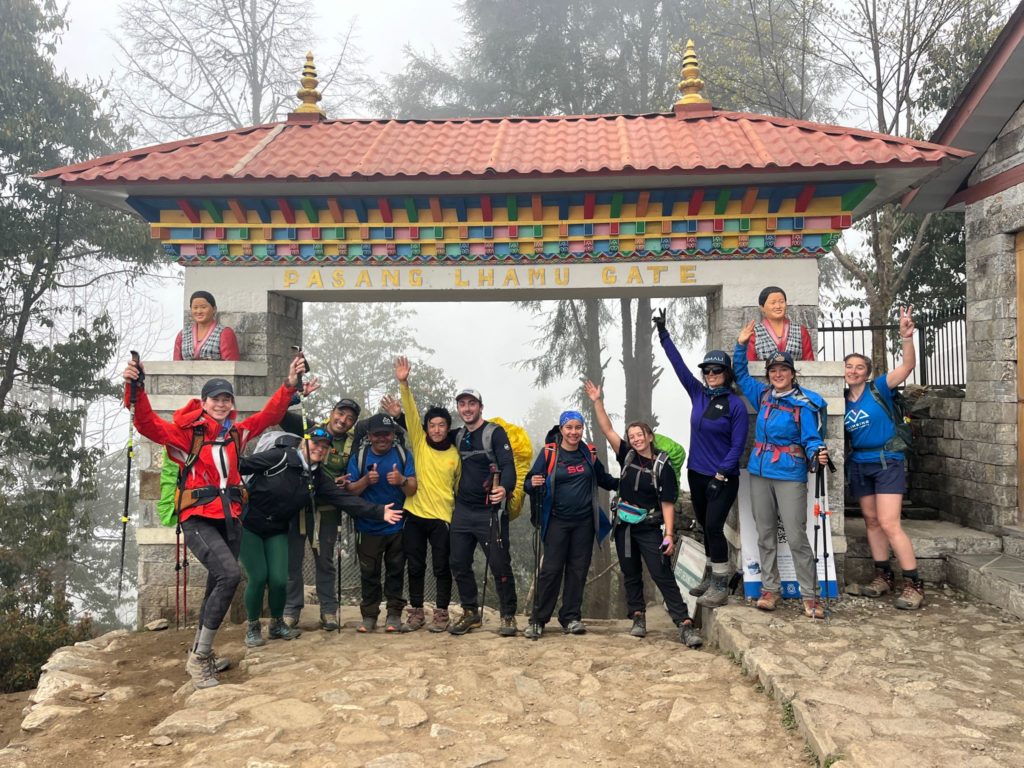 That's a wrap for our 2024 Everest Base Camp trek! (Photo Credit: Kat S.)
That's a wrap for our 2024 Everest Base Camp trek! (Photo Credit: Kat S.)
Our Lobuche climbers are tucked up in bed in Pheriche. Tomorrow, they will continue their trek down the Khumbu Valley to Namche.
Up at Everest Base Camp, our incredible Sherpa teams are ferry loads to Camp 1 and Camp 2 now that the route is open through the Khumbu Icefall. Once this is done, our summit climbers will begin their rotations! In the meantime, our summit climbers are happily training and hiking to keep active recovery.
